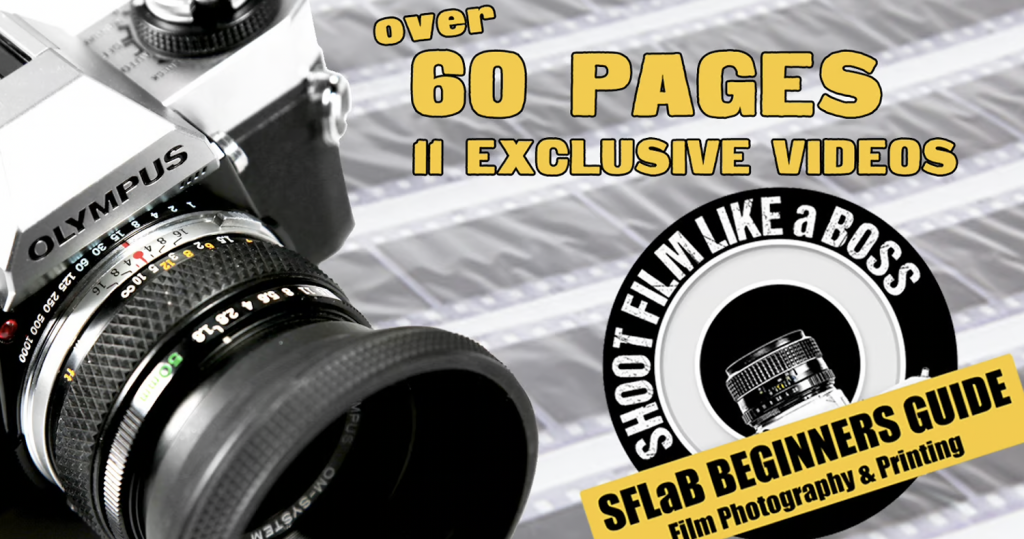TT Artisan 75mm F1.5 Lens M42 Fit
Let’s start this post off by saying a big fat – WOW!
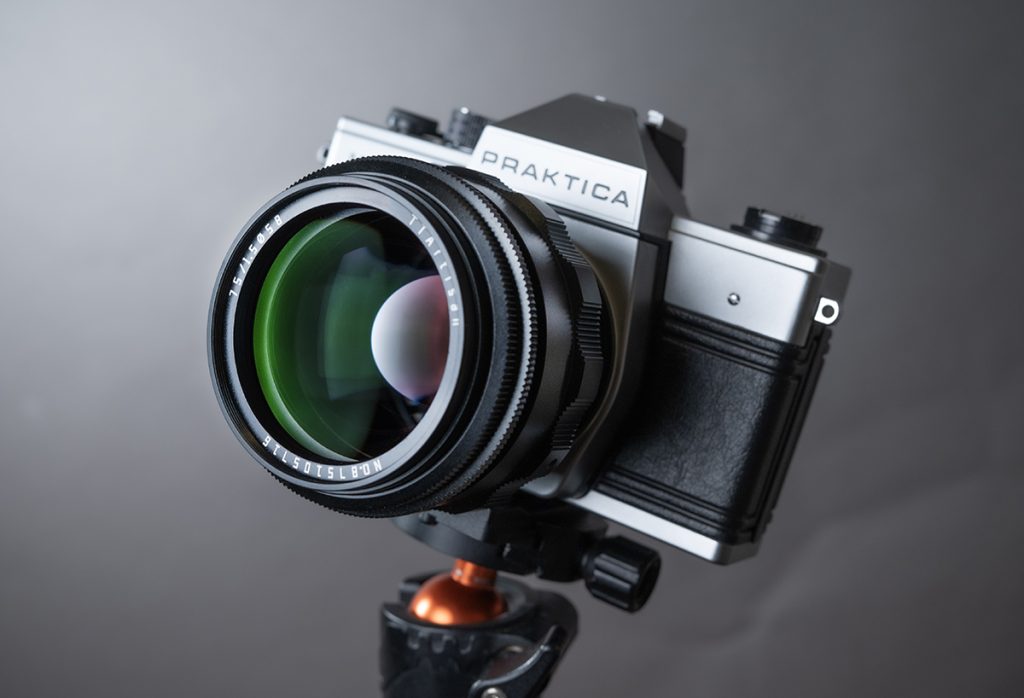
TT Artisan sent me this lens, their new Swirly Bokeh Lens and asked me to review it and also for their feedback. Why not! I get to keep the lens and if I don’t like it I will say so in my review and possibly sell it on or give it away. But I’m happy to say this lens is going to be with me for a long time! I love it.
The Video Review
Build Quality

“Okay, folks, buckle up! I’m about to embark on a journey into the unknown – the land of TT Artisan. Now, I’ve heard whispers of photography gear emerging from the depths of China, some good, some… well, let’s just say they make excellent paperweights. (My recent light meter reviews can attest to the “good” part, thankfully!). But lenses? Ah, lenses. The holy grail of photography. You don’t want to be caught dead with a lens that turns your subjects into blurry blobs, especially if you’re charging people actual money for your photos. Of course, there’s always room for some quirky fun – vintage lenses, anyone? Perfect for that ‘I shoot on film, even though I was born in 2005’ aesthetic.”
I really didn’t know what to expect from the lens and when I saw the box I was pleasantly surprised. The box looks good. Let’s look inside.

I have a few new lenses from Nikon and Canon and as you would expect the packaging is top notch! TT Artisan’s packaging is not bad, simple with no thrills and paperwork is on the cheaper side of the printing spectrum. In Chinese and in English. But who cares. We are just interested in the gear. Right?

There’s the lens in a bag with a packet of Silica Gel to trap any moisture.

And there is the lens out of the bag which brought a smile to my face. Straight away I felt quality. No loose parts, no numbers bleeding and it had a good weight to it too! Surely there has to be a catch. We are off to a great start for a lens that is priced around $270 or nearly £200. Build quality seems great!
- All metal
- fully manual
- m42 screw fit
- f1.5 – f16
- Closest distance is .75M 2.5ft
- Not weather sealed
- coated lens
- 6 elements in 4 groups
- Distance Scale (adjustable)
- 13 blades


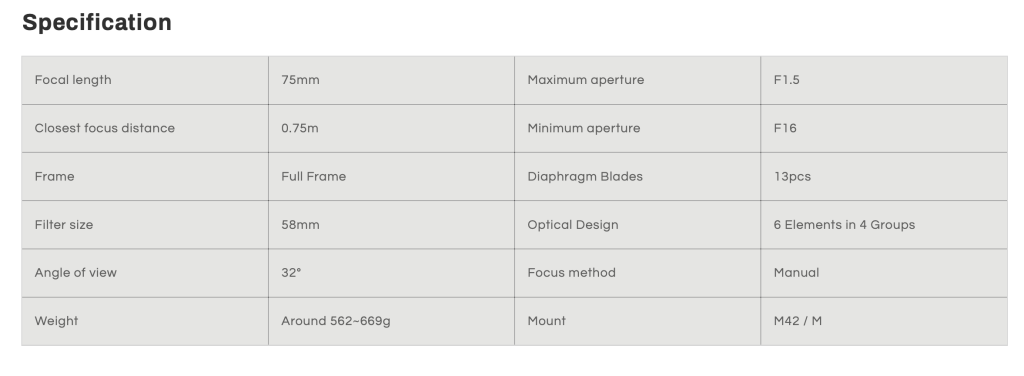
A 75mm lens with apertures from F1.5 to F16, designed to produce a Swirly Bokeh and best of all M42 mount. Which is awesome! I can use it on my classic M42 mount cameras.

Testing
So now for the exciting part. Testing the lens. Luckily for me I have an M42 to Canon adapter which is a bonus. That means I can test this lens on my Canon DSLR and get FREE photos! Then for the real stuff I can switch to film, but not before I have got used to it. I want to get swirly bokeh photos so I need to find the lenses sweet spot for this.
Open wide at F1.5 you will notice the lens is very soft edge to edge with the focus being in the centre of the image but that’s what the lens has been designed to do for the Swirly Bokeh. I was pleased to not see any vignetting.
For best results
If you want any bokeh to stand out you need good background light, in this case, trees that had nice light shimmering off the leaves, or trees where there is nice sky breaking in between the branches. I looked for these backgrounds and pointed the lens toward thing a photo in focus and then gradually pulling the lens out of focus throughout a duration of shots.

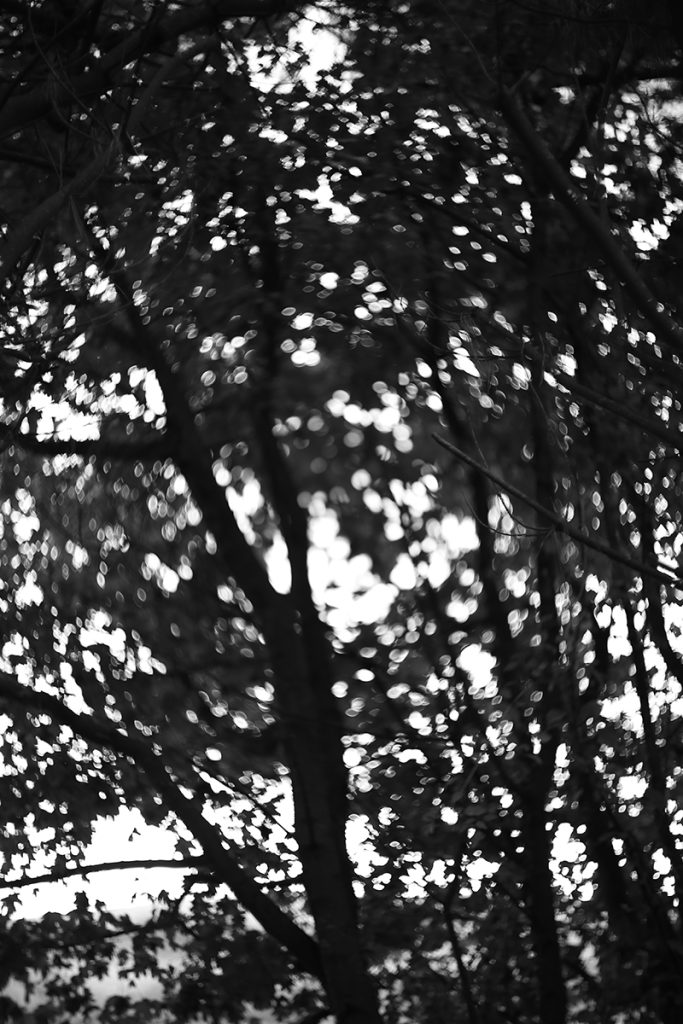

So the above images you can see the lens focused and then slightly out of focus. Thats when the swirly bokeh was more detailed! And the last photo was focused off the scale! Nice and dreamy! And these effects will depend on your distance between the subject and the background. For example here are two photographs I took of my daughter Jess, both at f1.5 –
The lens filter size is 58mm and I didn’t have an ND filter to fit and because I was shooting a 125 speed film at f1.5 with a camera where it’s max shutter speed was 1/1000 I needed an ND filter. So I used a 3 stop 72mm filter and held it over the lens. Not ideal as I had to pre-focus and then cover the lens and shooting f1.5 I think I did well at keeping the focus!

The above photograph, taken on Ilford FP4, was at the perfect distance, me from the subject and the subject from the background to get that swirly bokeh effect. And the bottom photograph I moved in closer so the subject and background was closer to the lens. Swirly bokeh has turned into this creamy smooth shallow depth of field look. Which is still nice!

Here are some more intentional swirly bokeh photos I took. And the one below was taken at f5.6. I found the lens to be exceptional at this aperture for sharpness.

Subject Use
Being a 75mm lens I think this is going to be used for some landscapes and portraiture. So I shot a few landscapes on digital and I was stunned at the quality from a lens at that price. Something similar from Nikon with f1.5 would not be as cheap! (Okay, we know Nikon produce amazing lenses!) but I doubt I would be able to tell the difference. In fact. I used my Zeiss Milvus 50mm f1.4 lens to compare.
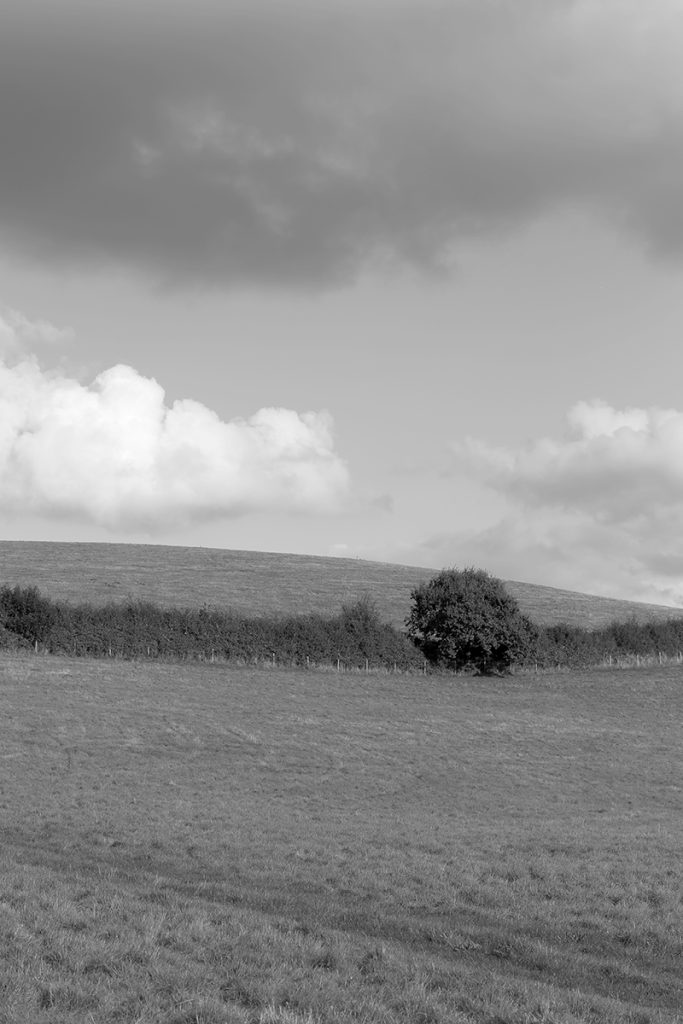
Above TT Artisan at f5.6. Below Zeiss Milvus at f5.6

Here are some more photographs I took with the TT Artisan Lens



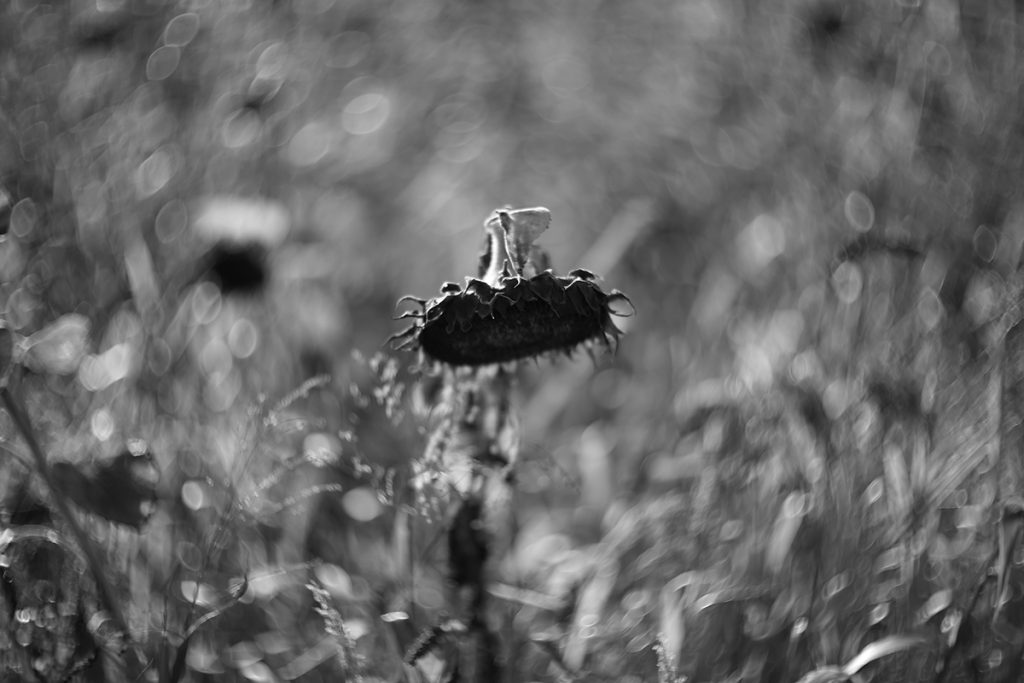


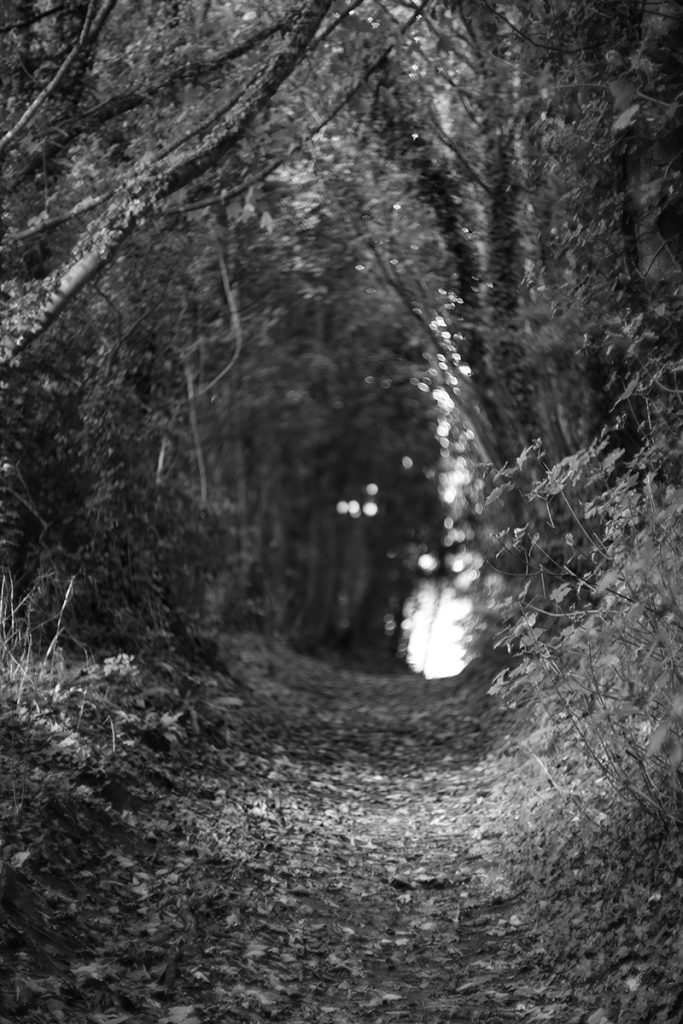

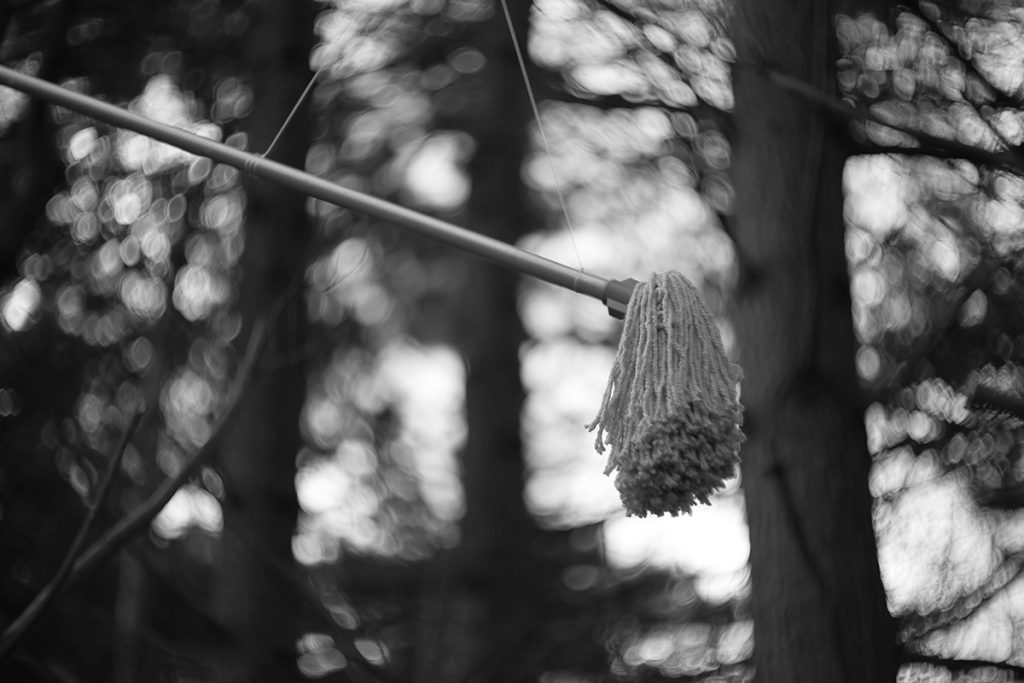

It goes without saying the lens is coated and does have a nice contrast.
Colour Fringing
One thing I have never likes on cheaper or older lenses is colour fringing. That purple/green tinge you get on the sharper edges of the photograph! I did a couple of simple tests and was pleased to see none of that, or at least for the subjects and lighting conditions I was shooting.
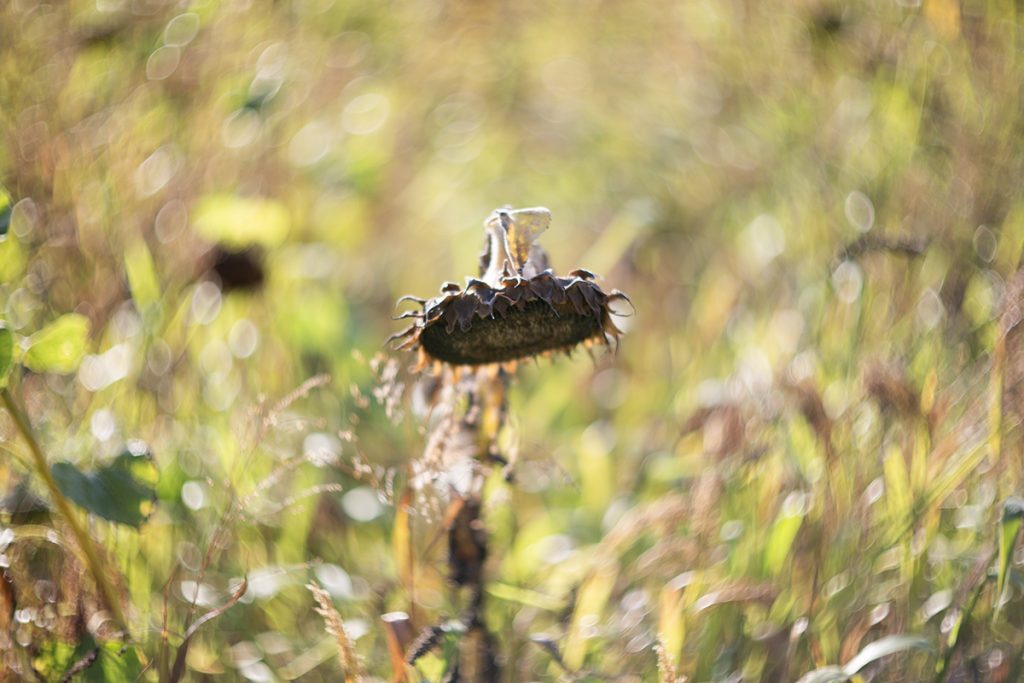



Final Conclusion
My testing of lenses isn’t exactly scientific. I don’t need to know all the science behind the manufacturing to see I have a good quality photograph from the lens. And visual inspection of the build quality any fool can do. You know if it’s going to fall apart in a few months and this lens surely doesn’t give that impression! I’ve had Canon lenses fall apart on me over the years. But they have taken a battering!
Like anything only time will tell how I get on with this lens. How will it hold up over the coming months being dragged around in my bag and keeping the dust out? I don’t know! How will it hold up with moisture and condensation? Extreme weather? I don’t know but from what I have seen so far from this lens it is excellent for the price! Splash proof? I don’t think so. I wouldn’t like to take it out in the rain.
I think it produces excellent quality from what I’ve seen and does exactly what it is intended for, swirly bokeh. And if you don’t like swirly bokeh then just shoot a smaller aperture, f2.8 upwards and even then you’ll get a beautiful looking dreamy shallow depth of field background.
And at the end of the day this is my own personal opinion of the lens. Others may be looking for something totally different but for me. I think it’s great!
What is Abstract Photography?
We get so caught up in capturing “things” – a pretty flower, a smiling face – that we forget beauty lies in shapes, textures, colours, light and shadows.
Abstract photography might sound intimidating, something for artsy types who see beauty in a rusty nail. But guess what? You’ve probably already taken some abstract shots without even realising it! Remember that time you were in a city, neck craned towards a skyscraper, mesmerised by the play of light and shadow? Was that abstract photography!
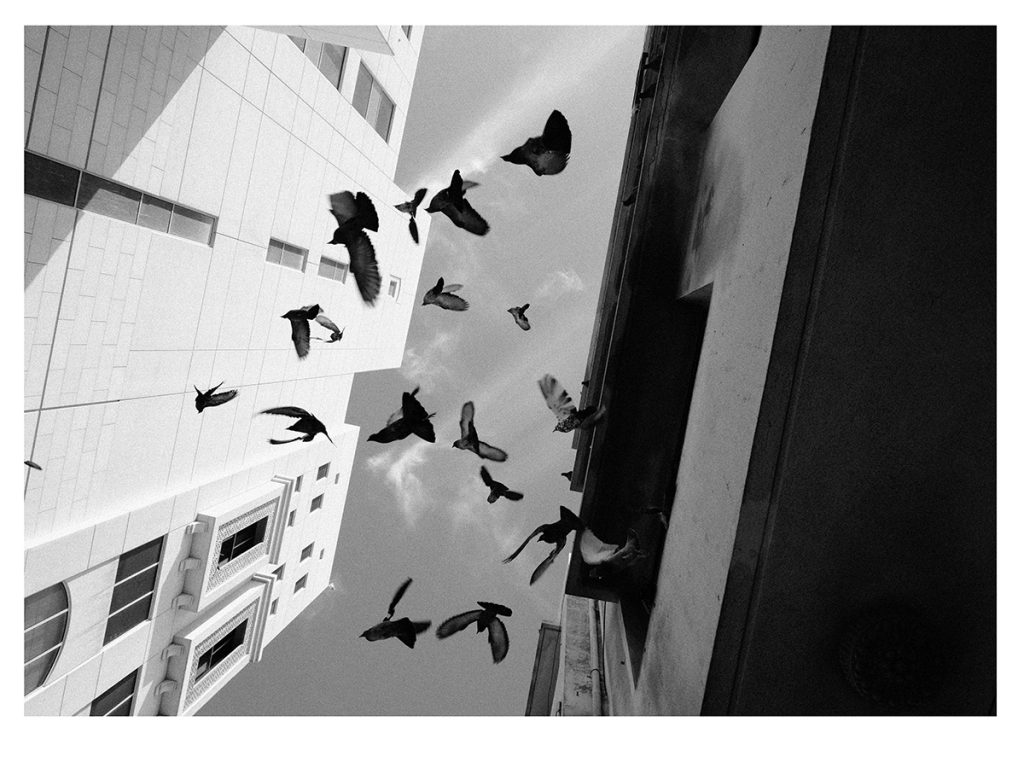

I start pondering, like a deep-thinking philosopher with a camera: ‘Where does this masterpiece belong? What’s the grand purpose of this staircase?’ Maybe it’s destined for a fancy hotel room, adding a touch of artsy intrigue. Or perhaps it’s the perfect statement piece for the lobby, subtly hinting, ‘Hey, we’ve got stairs, and they’re kinda fancy too!

And this intriguing handrail shot. Textured wall, sleek lines… Hmm, could it be hotel room material? Maybe, but perhaps it’s still not quite ‘artsy’ enough. Time to bring out the big guns! Behold, the vegetable strainer on a light panel! Totally unrecognisable, zero meaning, a true enigma wrapped in stainless steel with holes. Now this wouldn’t be out of place on a google search for abstract! Perfect for a hotel room?… if they’re into the whole ‘black and white, existential crisis’ vibe. Maybe too much for those coming back from a hard night out.
And you don’t have to leave your home to get it.

But. What is abstract?
I guess it would make sense if a client asked you for black & white abstract photographs. What would they say if you replied – “What do you mean by abstract?” Would I feel silly asking the question? Probably! Maybe my return answer would be something like “So, you are looking for black and white prints without any identity – do you want soft or do you want hard black and white? Do you want lots of texture in them, lots of different shades of black and white?” – Maybe, that would be a better answer.
We could whittle the word “Abstract” down for professional use and categorise it. So when a client asks we can give them examples of certain types.
- Soft/Hard Abstract
- 50 Shades of Abstract
- Contrast Abstract (Such as the vegetable strainer)
- Strong Abstract (Totally unrecognisable)
- Minimal Abstract (Sort of recognisable)
- Textured Abstract
- Street Abstract
I made a video recently where I explored abstract photography indoors. My set up was very simple. I used a light panel (What I use to scan my negatives), a 55mm lens and everyday objects from indoors. The light panel gave me beautiful minimalistic light that rose up and wrapped around my subjects and also a brilliant white high key background. The video idea was abstract photography with phone and computer wallpapers in mind, hence the thumbnail.
Indoor Abstract
Why indoors? Let’s face it, most of us have stared out a window, camera in hand, feeling a bit like a lost puppy. We want to capture something, but the world feels stubbornly un-photogenic. Look around your home! And if you have a light panel or even a tablet you have a high key background.
Metering the scene was easy. I just metered for the panel which meant I took a reading from the cameras average and overexposed a couple of stops. If I had a darker subject I would just overexpose by another stop or two. Overexposure didn’t matter for the light panel. You can’t get whiter than bright white.

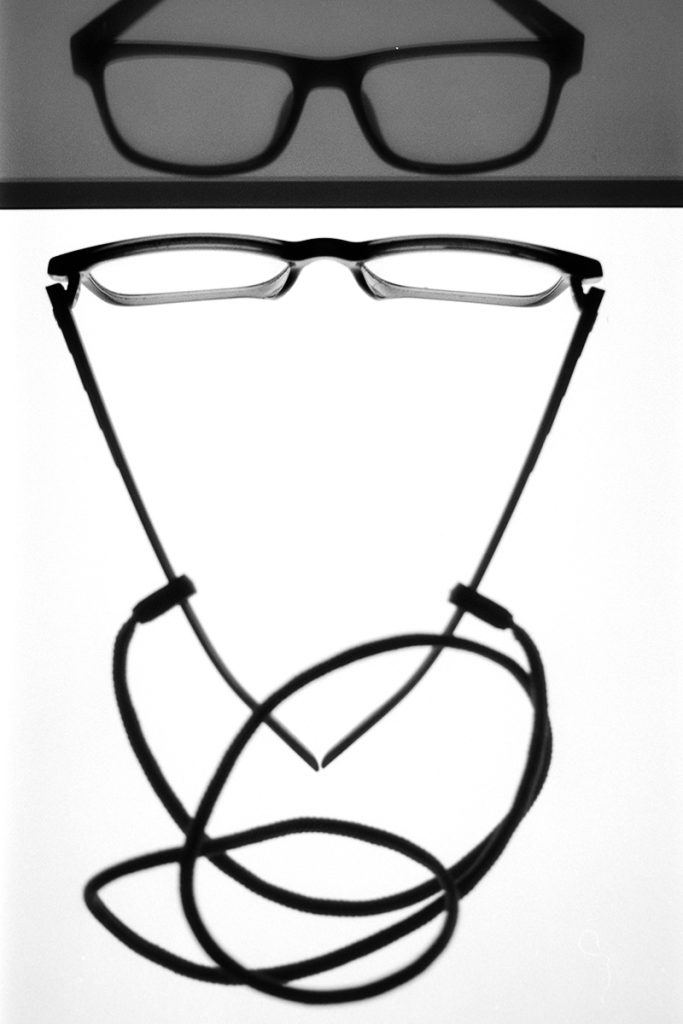
Abstract? I’d say more arty farty. But let’s look at those categories I mentioned and see if I have any photographs that may resinate.
Soft/Hard Abstract
I would split this into two. Soft or Hard. Soft being a photograph with a shallow depth of field and Hard with a larger depth of field. Here are two photographs of pens. One is soft, the other hard. Controlled by the aperture.

Shades of Abstract
This would be abstract photography which has many shades or tones. This is tracing paper screwed up and the light from the panel gives us many shades.

Contrast Abstract
This is an easy one. Hard contrast.

Strong Abstract
For a strong abstract photo I would say something totally unrecognisable. This could also be Strong – Plus another category such as Strong Soft. Strong Textured.

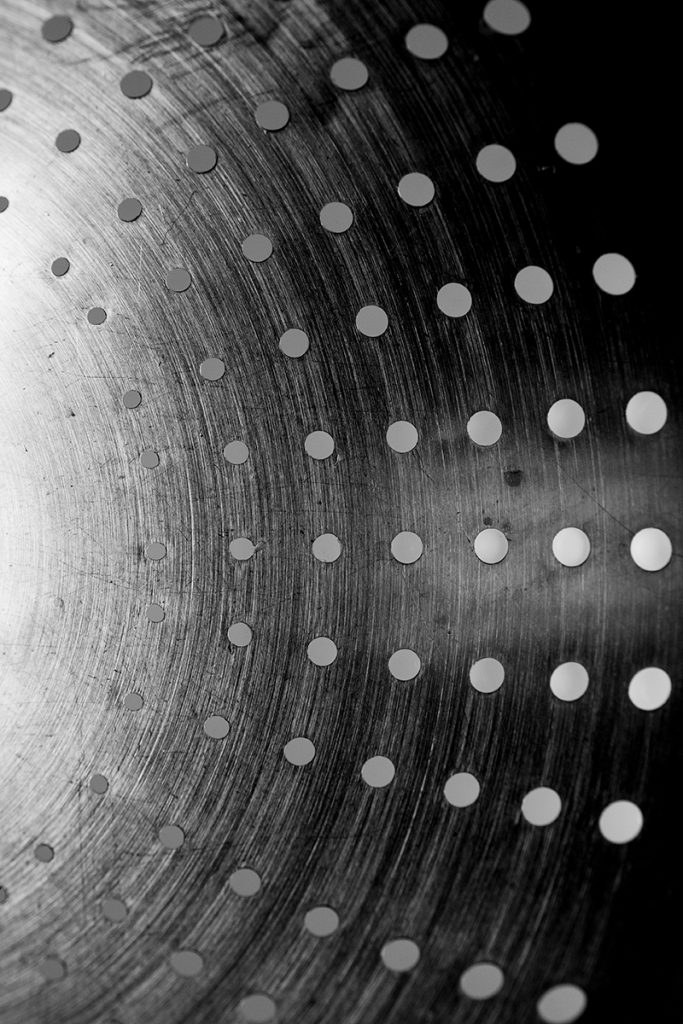
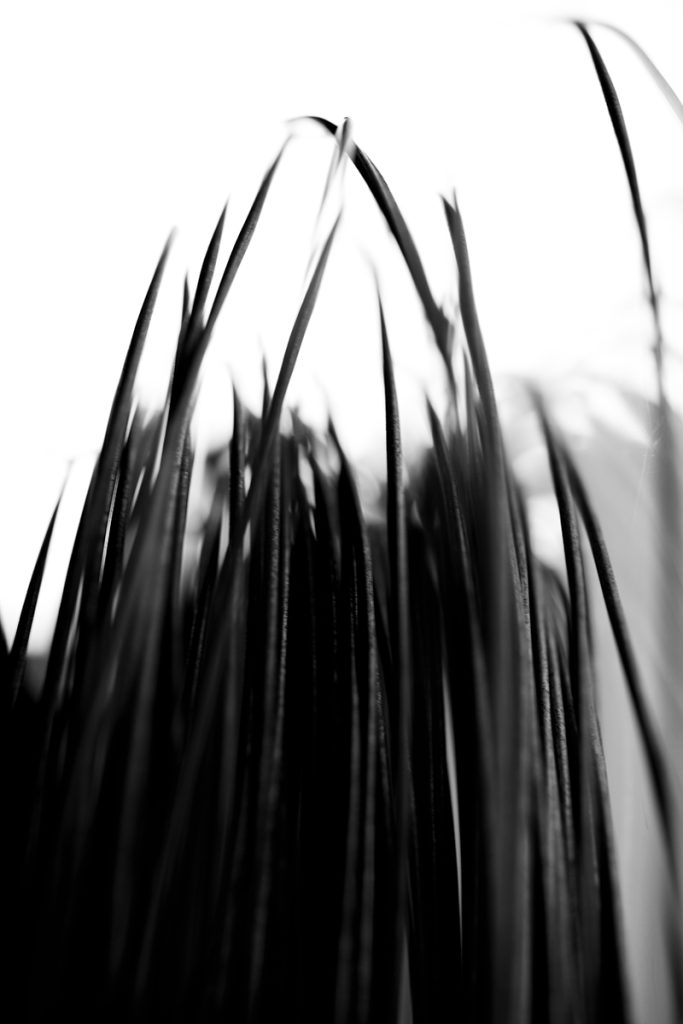

Minimal Abstract

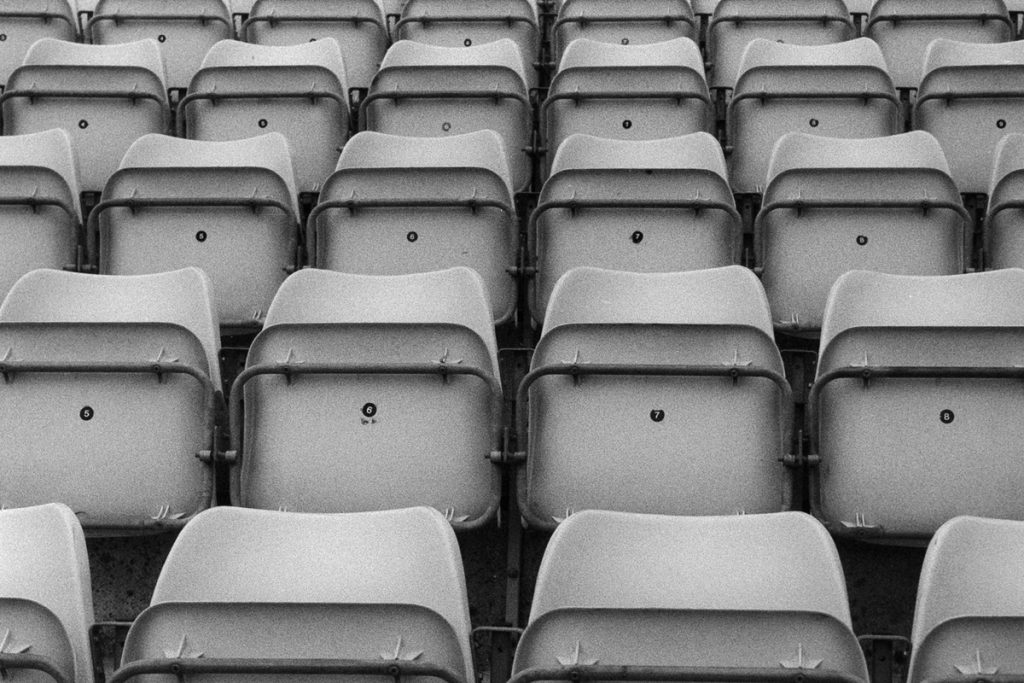
Textured Abstract
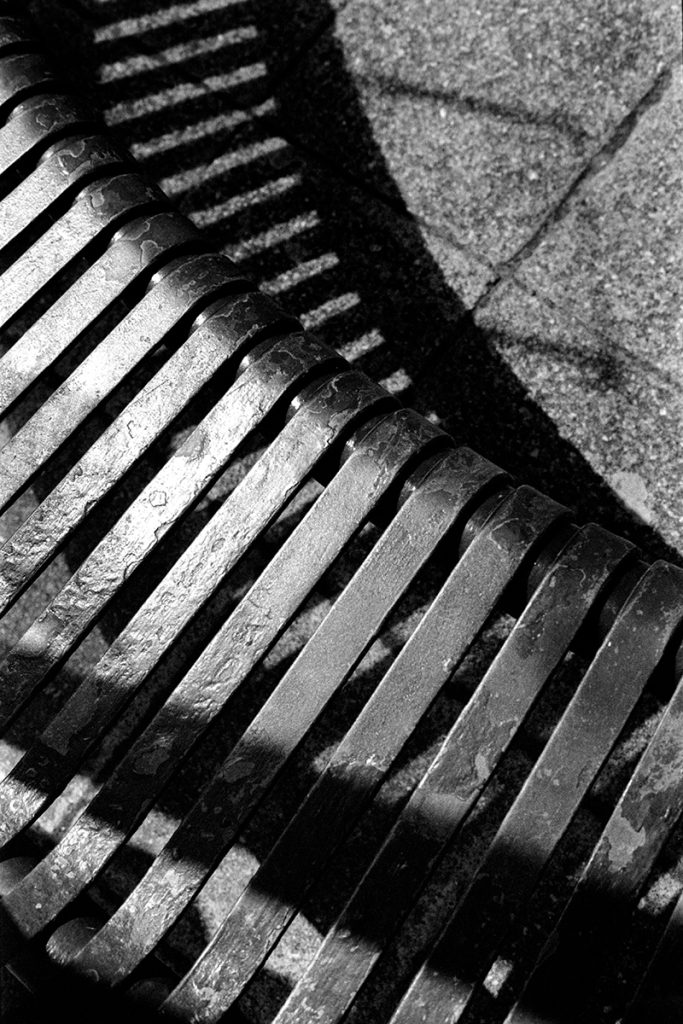

Street Abstract
It’s not difficult to find abstract in the street for all of the categories. Probably a lot easier than indoors and you have the option, when sunny, for hard light for more striking shadows.
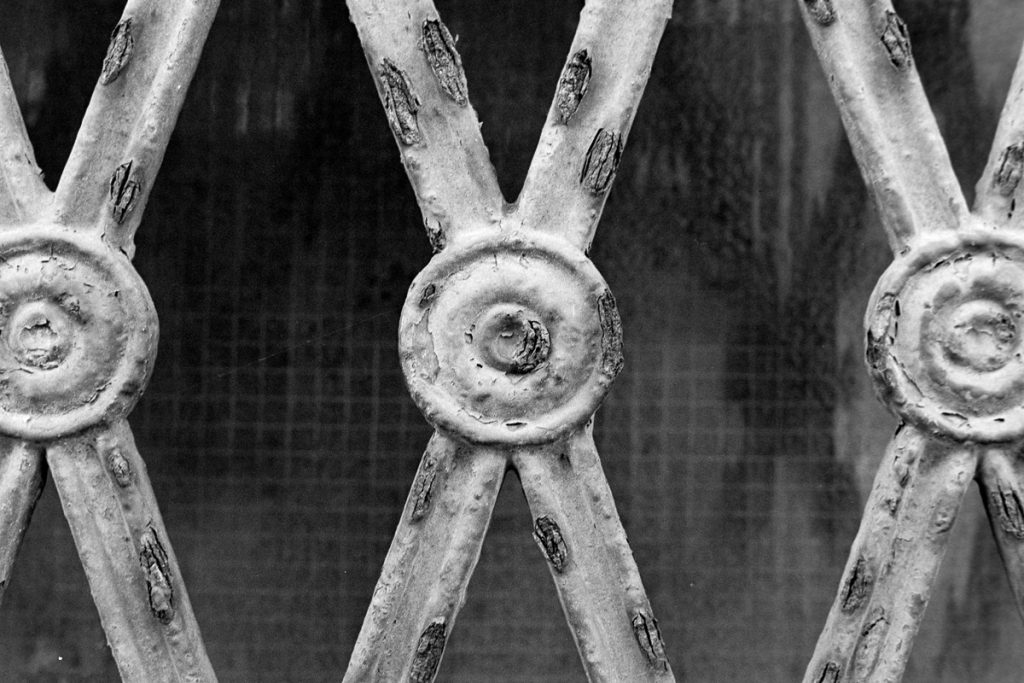


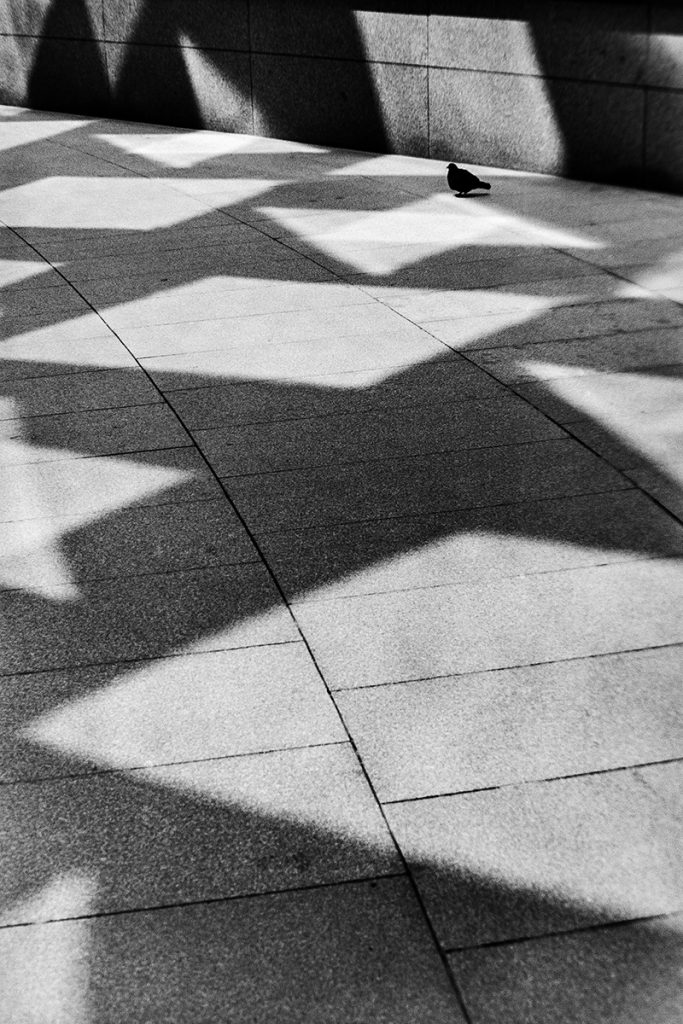
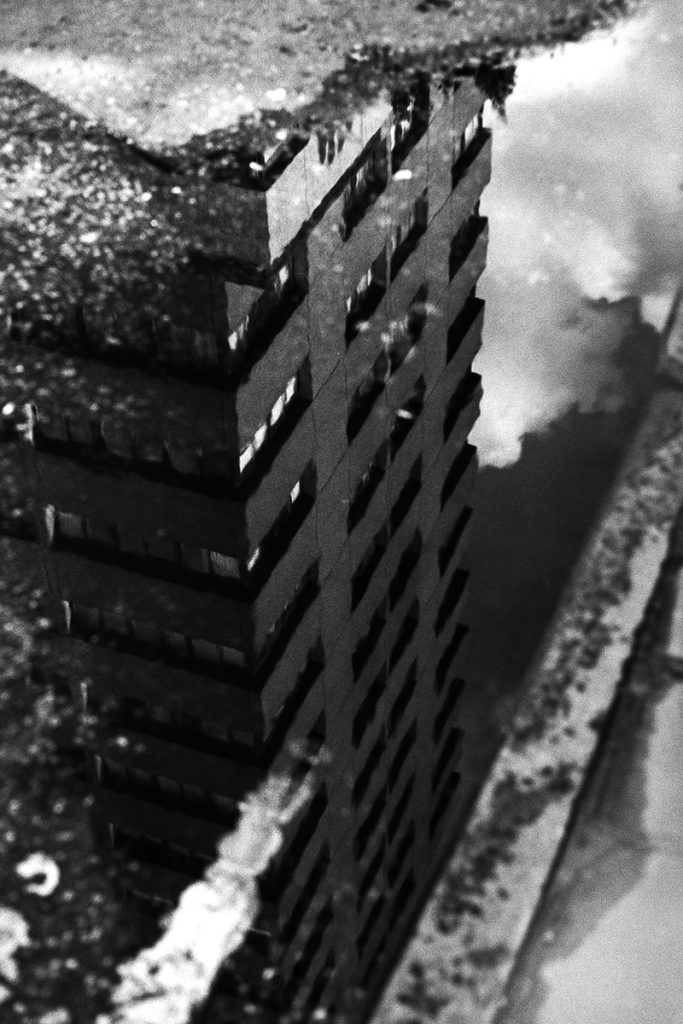
Where it all gets lost!
I think it’s important not to allow “Minimalistic” Photography to get in the way of abstract and you could argue that some of the examples I have shown are just that – Minimalistic Photography. Which is when things get confusing! The categories we can use to make sense of it all? I think on a client side of the argument it’s a sensible way to define or whittle their understanding and expectations. As if a client asked me for an “Abstract” print for his hotel rooms they could possibly choose one that I and many consider to be minimalistic. Abstract to me is a word that can define many styles and we can find abstract by looking for the main ingredients –
Light, Texture, Shape, Symmetry and colour regardless of subject identity. Meaning it – doesn’t matter if it’s obvious. Like this Guitar.

Just because we can see it is a Guitar, does it mean it’s not abstract? Maybe it’s too obvious.
Google the meaning it says “Abstract photography, sometimes called non-objective, experimental or conceptual photography, is a means of depicting a visual image that does not have an immediate association with the object world and that has been created through the use of photographic equipment, processes or materials.” Wiki
So how about this of the Guitar. Maybe it’s more inline with abstract where it’s not so obvious.


Above all it is a good subject to take on – sometimes with stunning results and just because you have Googled “Abstract Photography” don’t feel pressured to find similar. Look for those ingredients wherever you are, take the photo and see how it turns out. You’ll soon find out yourself what you see as abstract. And if you’re not into street photography there is plenty of subjects you can find indoors that can lend themselves to some awesome abstract photos.
Phoenix just got bigger!

The techies over at Harman have been busy the past few years. Those clever lab jacket guys have not only built a brand new 35mm colour film from scratch, which must have been a heck of a job!, they have now released the same film in 120 Format! I can only guess that Phoenix 200 had a successful year and it’s great news for those that mainly shoot Medium Format! I for one am excited about the release. Not because I am a colour film nerd, I’m not! I love Black and White too much – but now and then I shoot a bit of Phoenix and I don’t necessarily want to shoot 36 frames of the stuff! So this is perfect for me to whack out 8 frames on my 6×9 Camera. My only shortfall is that I don’t print colour. Never had! Even though I can. I have an Intrepid Enlarger. I should.
But for now if I like a photograph that I have taken in colour I ask my friend Steve, who owns a gallery and a very nice printer, to print one for me. Simple. And I always have the negatives for the future.
I recently put out a vlog shooting the new 120 format where I was lucky enough to have some rolls sent to me from Harman and I couldn’t wait to see what the negatives looked like on a 6×9 surface. I shot one roll, 6×9, but realised not everyone shoots 6×9! So for the vlog I used my Pentacon Six 6×6 medium format lump.
I shot four rolls in all and developed them all in Cinestills C41 Kit. Which is dead easy to do! I have a video on that process if you want to see it. It was my first attempt at developing colour film.
Here are some of the photographs that I took and I must admit, I thought they looked really clean as my experience with the 35mm version of
the film I have had a mixed bag of results with grain and contrast… possibly due to development! Who knows. But these came out nice.
6×9 Images

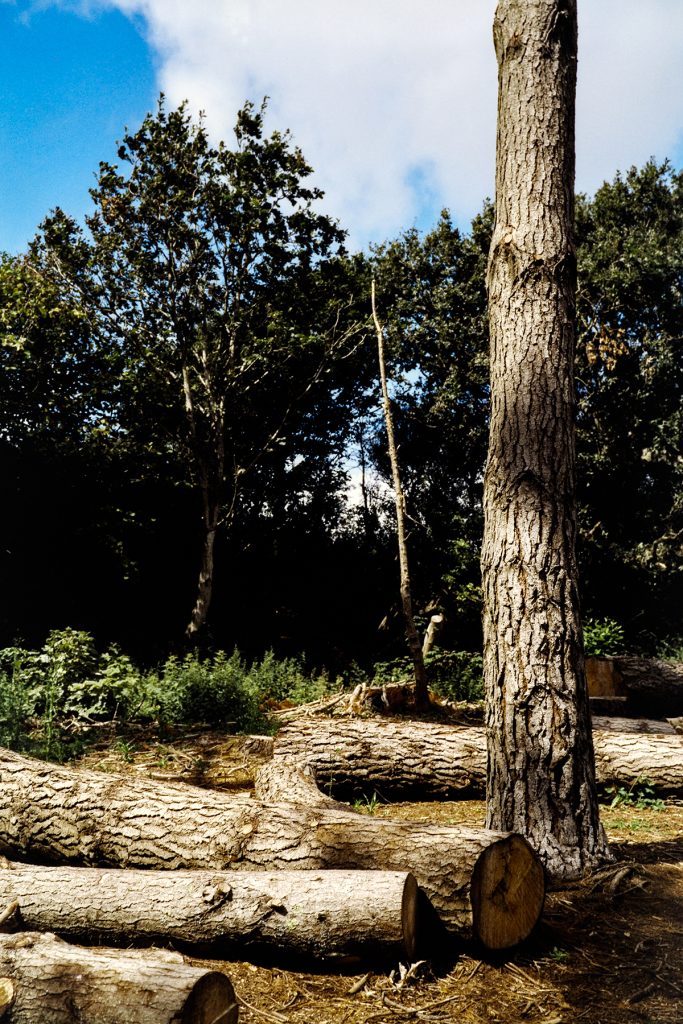
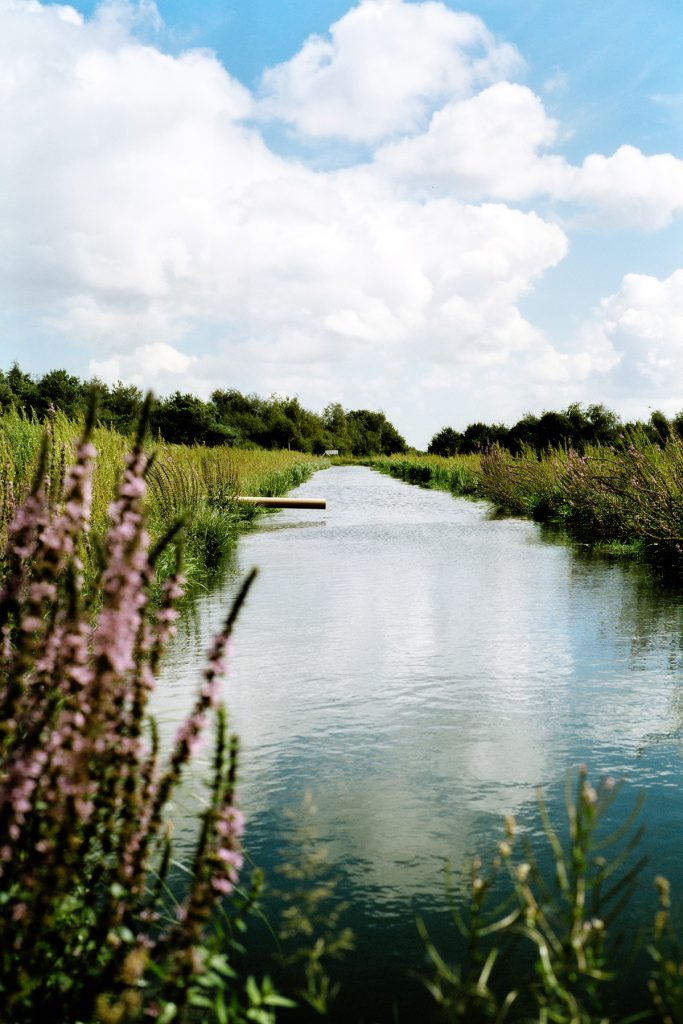
6X6 Images








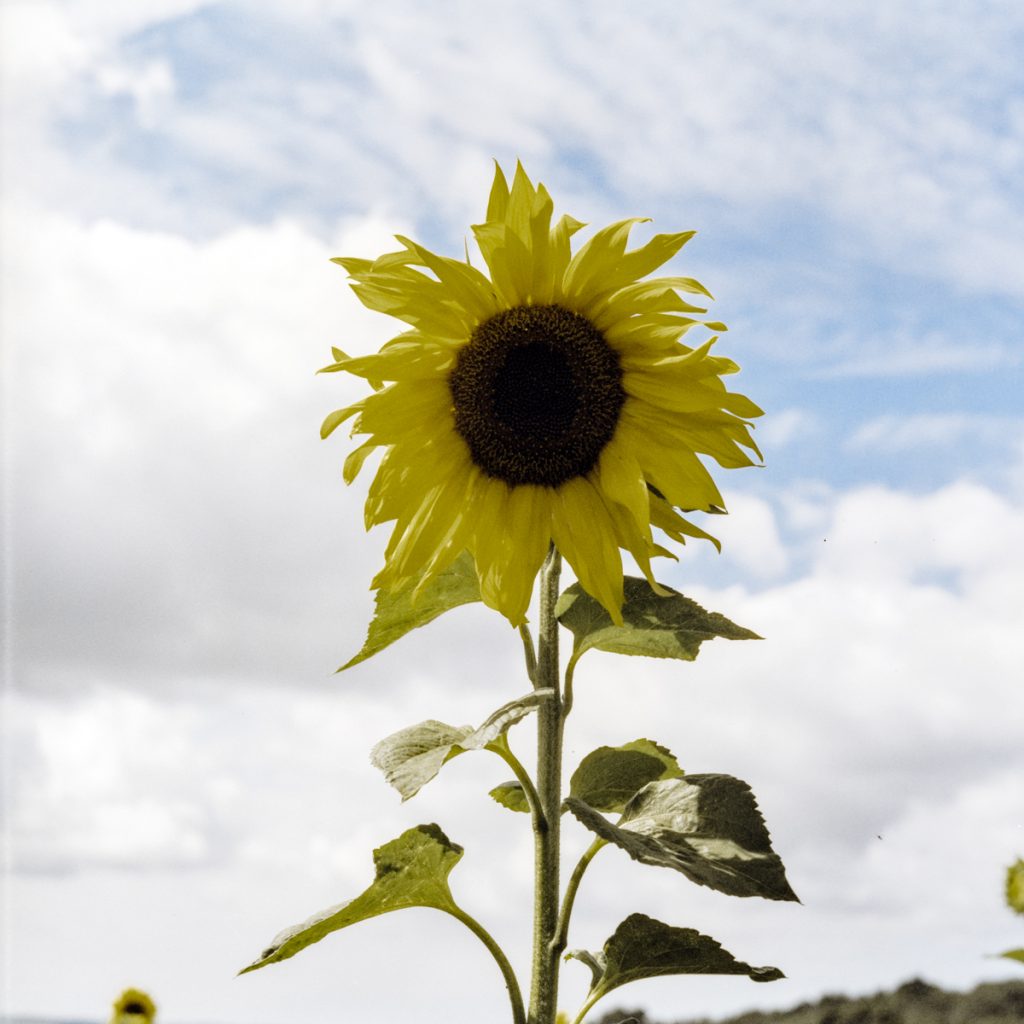
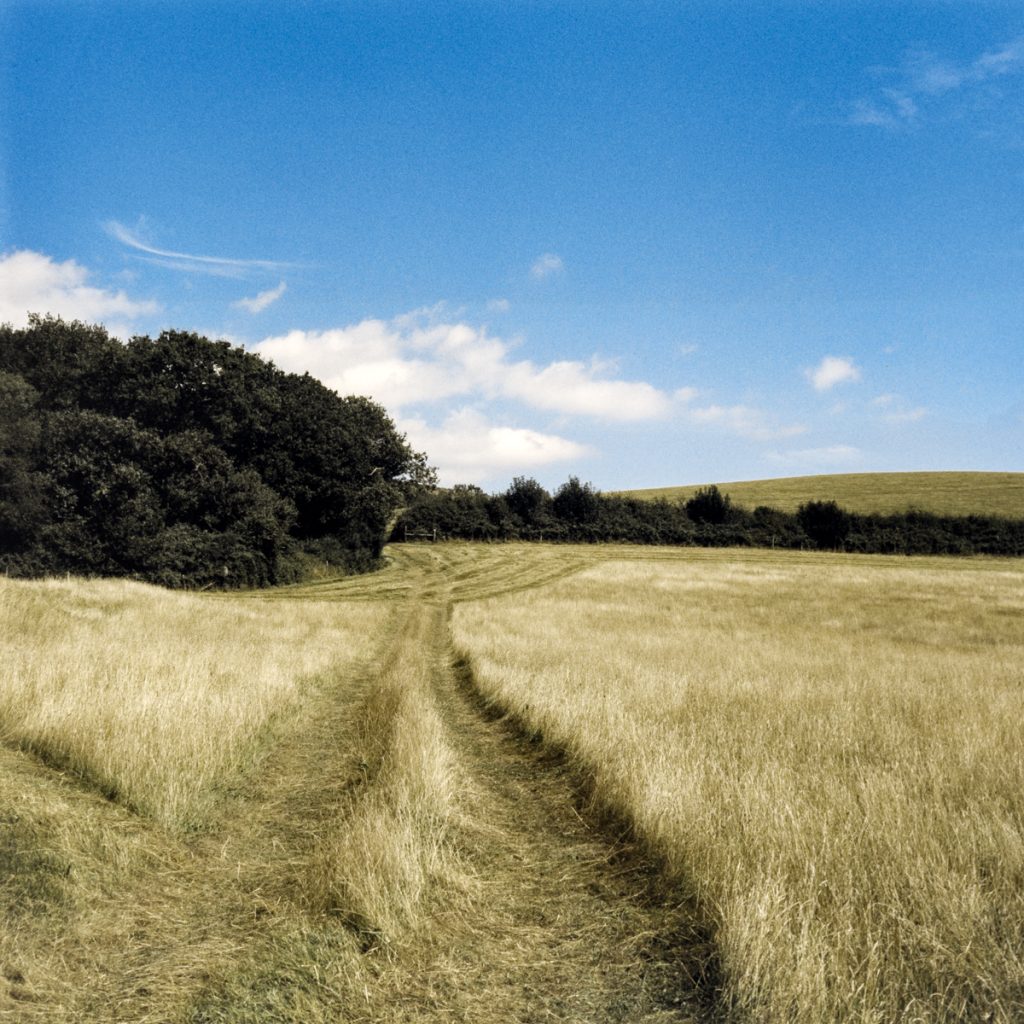
The Praktica MTL 5b
The Praktica MTL 5B was generally considered to be a relatively inexpensive camera when it was released in 1985. It was part of a line of cameras produced in East Germany, known for being functional and affordable, catering to amateur photographers and enthusiasts on a budget.
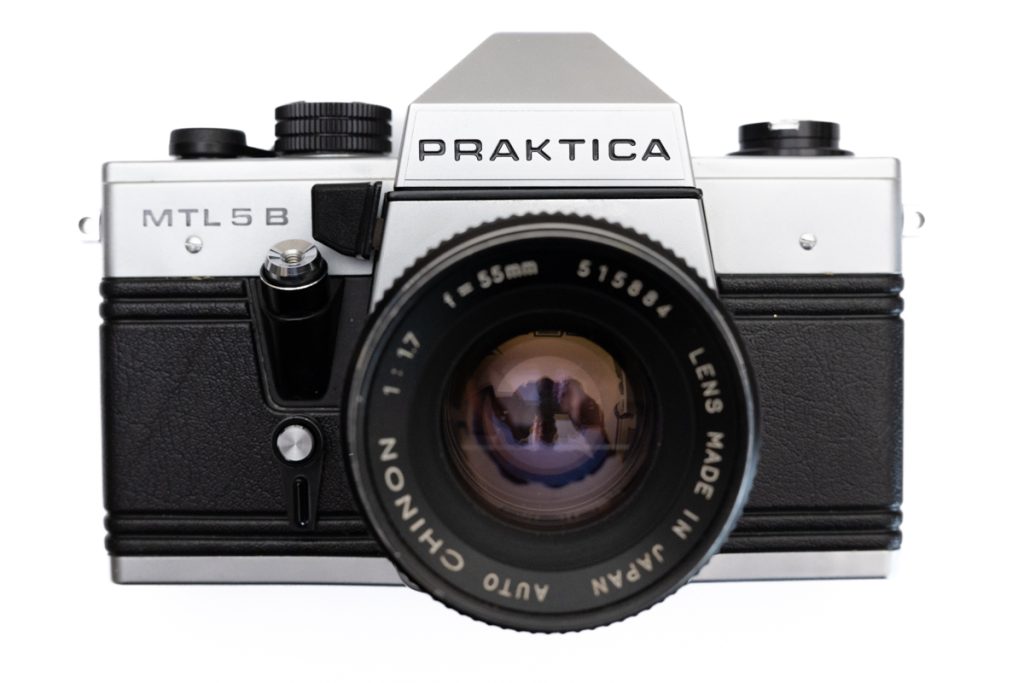
It was positioned in the lower-to-mid price range. It was certainly not considered a luxury or high-end camera, but rather a practical and accessible option for those seeking a reliable SLR camera without breaking the bank. Its affordability was part of its appeal, making it a popular choice for students, hobbyists, and anyone interested in exploring film photography without a significant financial investment. Let’s be honest, no camera is perfect. The MTL 5B has its quirks, but its strengths far outweigh its weaknesses
Today you can pick these cameras up for anything between £10-£50! I actually struggled to find one above £50 which is amazing for a camera of this quality. Compare this camera to any other SLR with similar functions. It’s proper cheap! But don’t let the price fool you into thinking it’s no good. The one I have, which was given to me by a good friend works a treat!
It may not be the most comfortable camera to use. It’s heavy and take a bit of getting used to but it sings a nice tune once you have a good lens on!
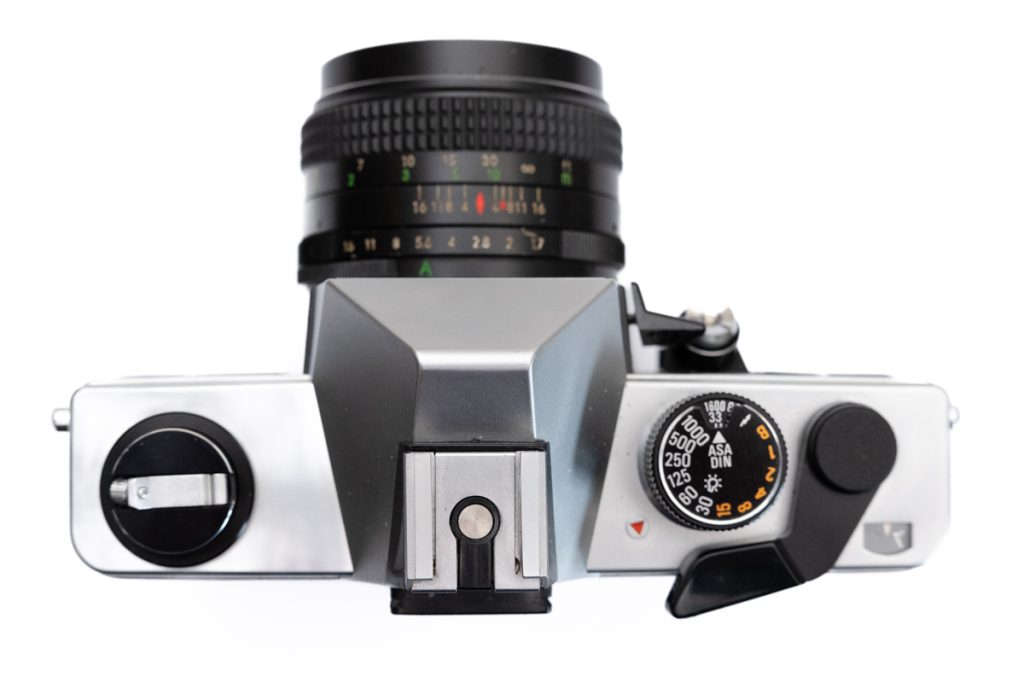
It has shutter speeds from 1s to 1/1000, ISO range from 12-1600, frame counter window and also a hot shoe for flash. So there is plenty to get creative with. And the best thing I like is this cameras lens mount is M42 Screw Fit! I have a few of those lenses and even used ones online are inexpensive and plentiful too on the used market.

Features:
- TTL Metering with Modern Convenience: The MTL 5B boasts a through-the-lens (TTL) light meter, ensuring accurate exposures even in challenging lighting situations. Unlike some older Prakticas, it uses readily available LR44 batteries, eliminating the hassle of hunting down obsolete mercury cells. Unfortunately this cameras meter is a bit twitchy!
- M42 Lens Mount – A Gateway to Vintage Glass: One of the biggest draws for me was the M42 screw mount. This universal mount opens up a world of creative possibilities with a vast selection of affordable vintage lenses from various manufacturers.
- Built to Last: This camera is a tank! Its all-metal construction feels reassuringly solid in your hands, and it’s built to withstand years of use and abuse.
- Simple and Intuitive: Despite being a fully manual camera, the MTL 5B is surprisingly easy to use. The controls are logically laid out, and the viewfinder is bright and clear, making it a great choice for beginners and experienced photographers alike.
- Mechanical Shutter: No need to worry about batteries dying in the middle of a shoot. The MTL 5B’s mechanical shutter operates even without power, ensuring you can keep capturing those precious moments.
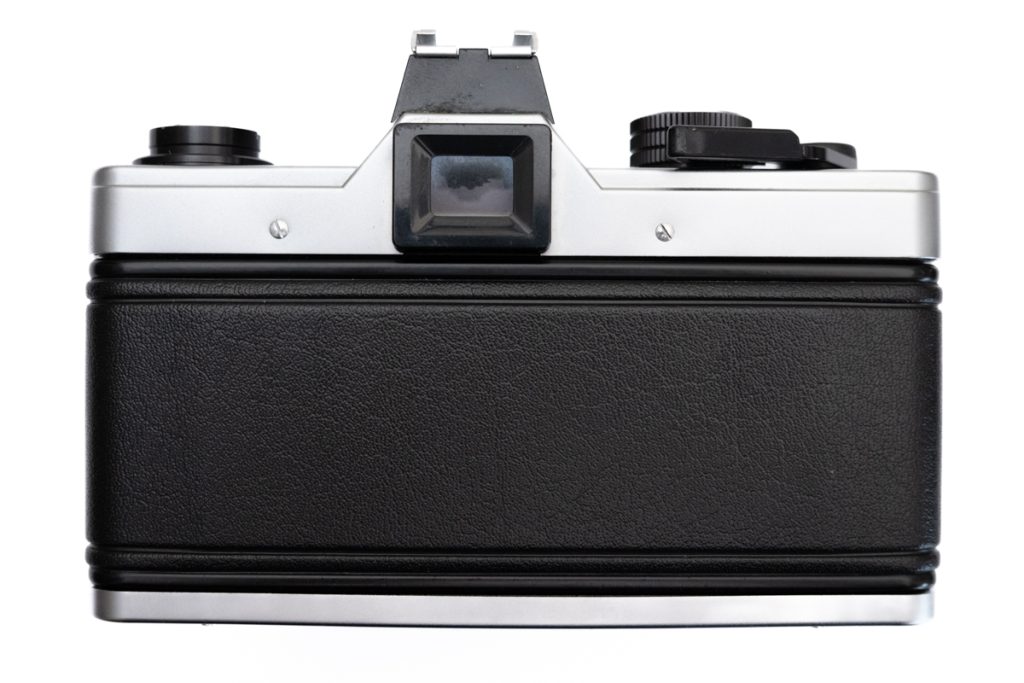
What about the downsides? There isn’t many!
- Weight: It’s a bit on the heavy side, especially with a lens attached.
- No Depth-of-Field Preview: You’ll need to rely on the depth-of-field scale or stop down the lens to preview your depth of field.
- Basic Feature Set: It lacks some of the bells and whistles of modern cameras.
- Metering: The metering system can be a bit finicky in certain lighting situations.
- Shooting: I found the fire button to be in an awkward position with the stop down meter very close!


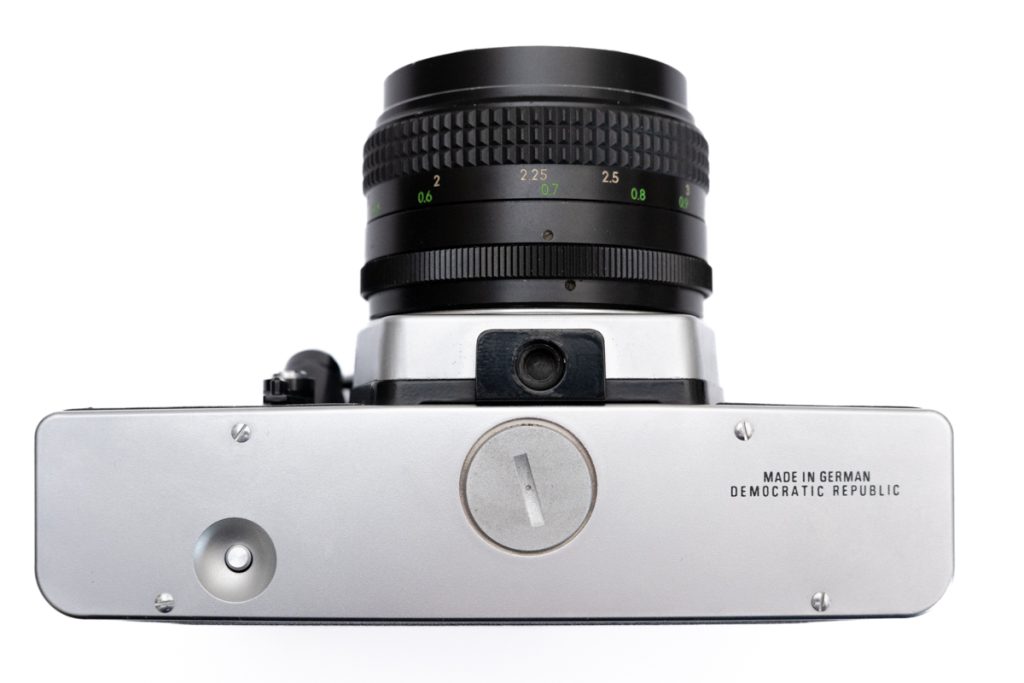



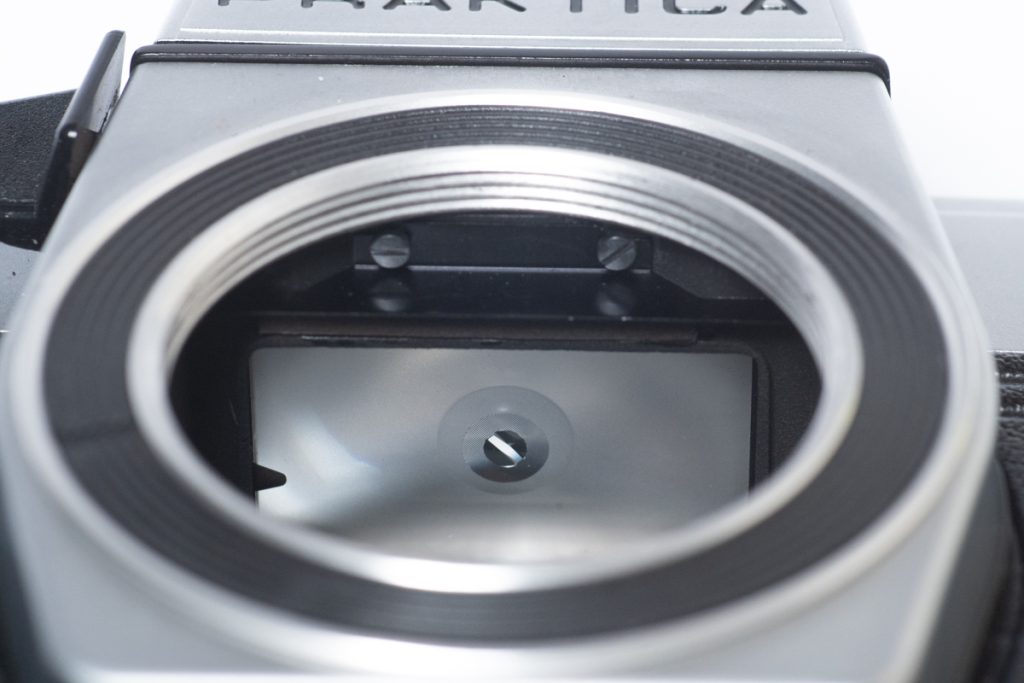

I have only used this camera once so far and it was a joy to shoot. All of the shutter speeds appear to be accurate and the mirror operates as it should, so thats all I could ask for. The rest for good photos is up to me and the lens I choose. As I said, the meter is a bit twitchy so I don’t rely on that.
Some example photos:
Chinon 50mm Lens. Ilford FP4 pushed to 400 developed in D23 Stock.


You see a light leak here. That was from the FP4 bulk load! Not the camera.

Hanimex 28mm

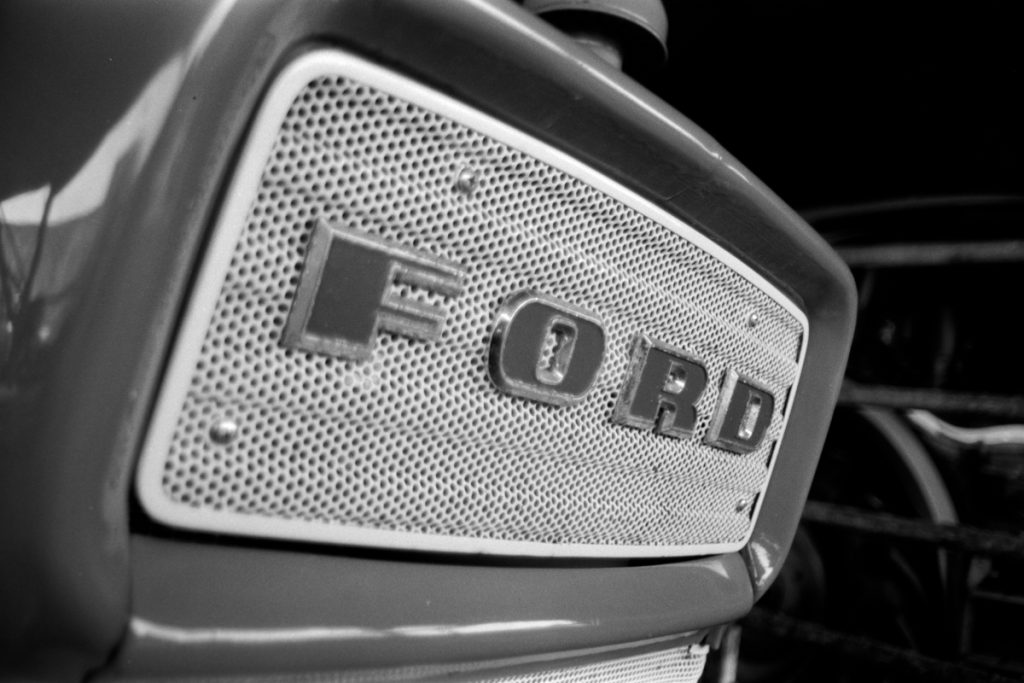
Hanimex 28mm Lens with Fish Eye Adapter


Chinon 50mm

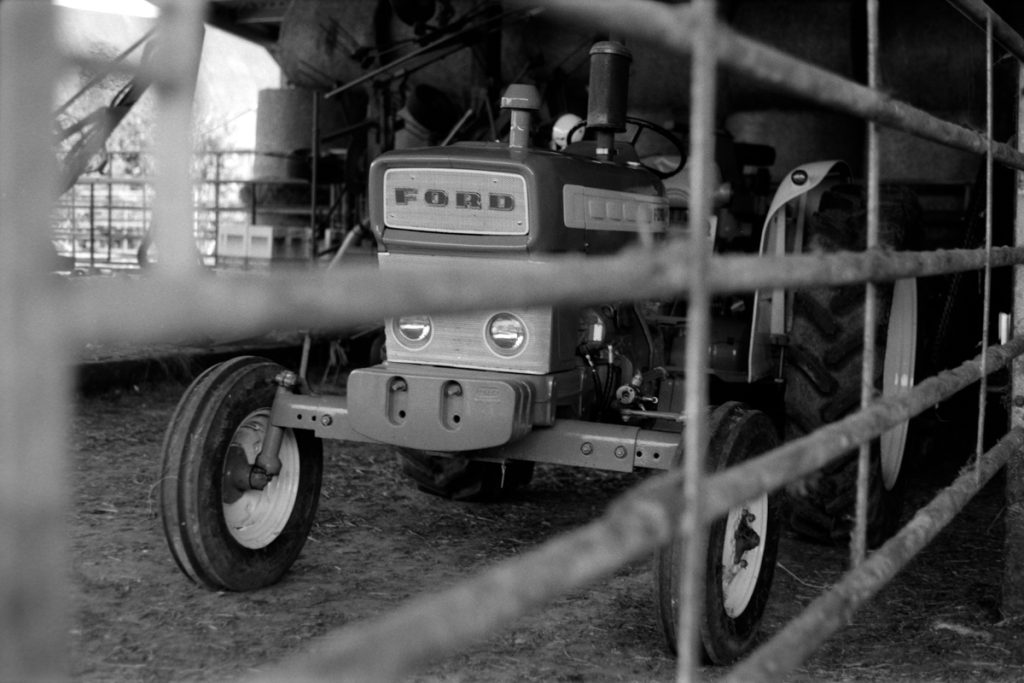
And these lenses I used were cheap lenses too!
So there you have it. The Praktica MTL5 b. An excellent camera, built like a tractor and very capable for taking great photographs. Heavy, a bit fiddly with the fire button if you are used to a regular SLR where the fire button is on the top, but you soon get used to it. If you get one with a working light meter then you have a bargain camera!
Practice Photography and Confidence!
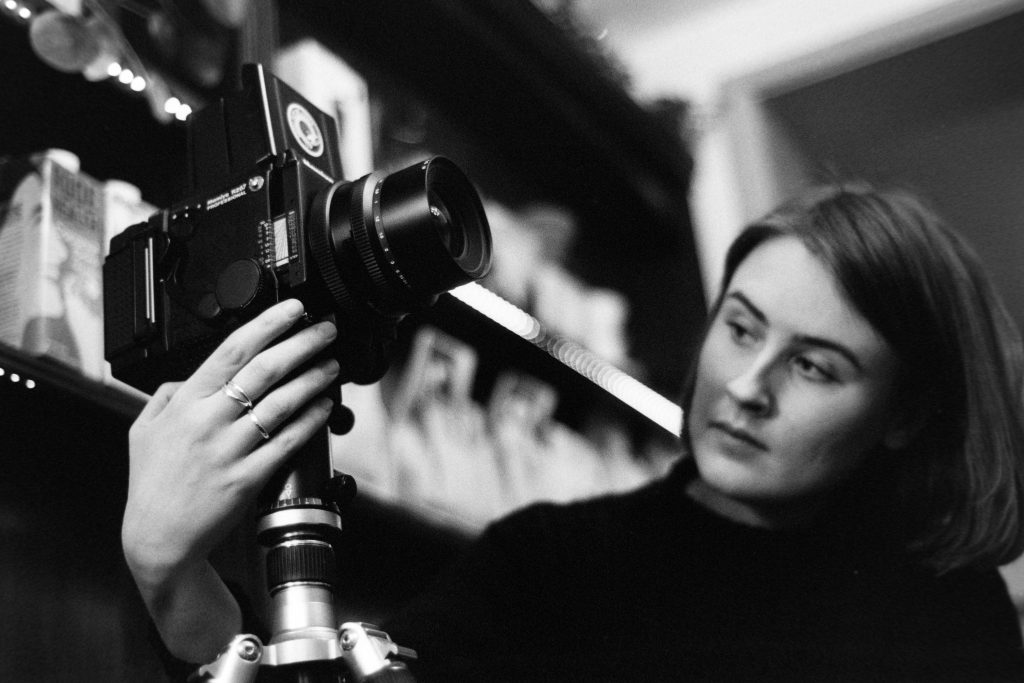
Why Photography is Worth Pursuing
Photography is a wonderful hobby to get into, offering a unique blend of creativity, technical skill, and the joy of capturing life’s fleeting moments. Whether you’re using a smartphone, a simple point-and-shoot camera, or a professional digital camera of film, photography opens up a world of possibilities for self-expression and exploration.
Preserve Memories: Photos are more than just images; they’re time capsules, allowing us to relive special occasions, family gatherings, and travel adventures.
Develop Creativity: Photography encourages you to see the world in new ways, experimenting with composition, lighting, and different perspectives to create unique images.
Connect with Others: Sharing your work online or joining photography communities can lead to valuable connections and feedback from fellow enthusiasts.
Stress Relief: Spending time outdoors capturing nature’s beauty or focusing on a creative project can be incredibly therapeutic and relaxing.
Learn New Skills: From mastering technical aspects like aperture and shutter speed to post-processing techniques, photography is a continuous learning journey.
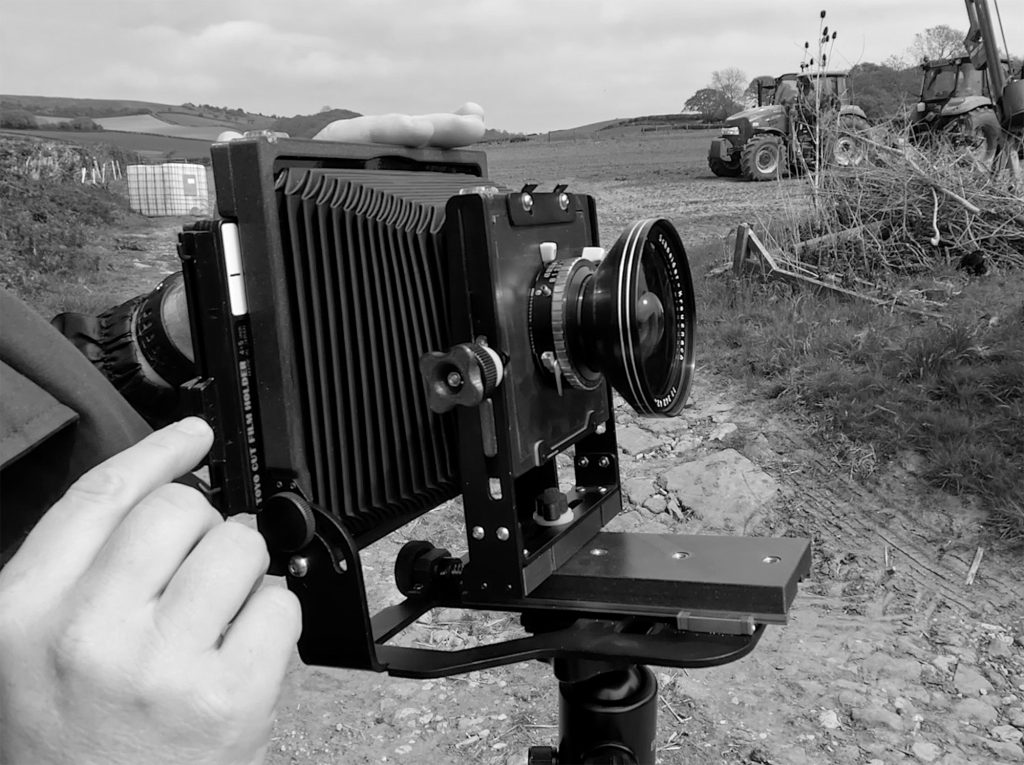
Practice
I can’t stress enough how important it is to practice with your camera regularly. Aim for at least once a week, even if it’s just a quick session. You might think your local area is nothing special, but I promise, there’s always something worth capturing.
Take a favorite spot, like this tree I keep returning to. I’ve probably lost count of how many times I’ve photographed it, yet each visit feels new. The tree itself remains constant, but the light, the sky, even the ground beneath it, always change. This creates endless variations in light, shadow, and cloud formations and who knows how many compositions I haven’t discovered yet! So, yeah, more visits to come for sure.
The key is to look at familiar scenes with fresh eyes. Experiment with different angles, play with light and shadow, and try new compositions. You’ll be amazed at how much beauty you can find in your own backyard.

Do I need a break!
It’s surprisingly easy to fall out of the photography habit. Before you know it, weeks can slip by, your camera bag gathers dust, and those core skills you once practiced regularly start to fade. When you finally dust off the gear, it can feel like you’ve lost your touch.
That’s why it’s crucial to keep your hand in it, to practice frequently. Yes, you’ll hear about photographers taking breaks to refresh their creativity – and that’s definitely valid. I’ve done it myself many times. But when I was starting out, learning the ropes, I made a point of shooting as much as possible.
Consistency is key, especially in those early stages. It helps solidify your skills, build confidence, and develop your unique style. Don’t get discouraged if you feel rusty after a break – it happens to all of us. The important thing is to jump back in, rediscover the joy of shooting, and let your creativity flow.

Confidence

Many photographers struggle with the confidence to photograph people. It’s understandable – not everyone feels comfortable approaching strangers or capturing candid moments. But for those who yearn to try, the lack of confidence can be a real barrier.
I get it, I’ve been there myself. It’s not a skill that comes naturally to everyone, and there are times I still step outside my comfort zone. But confidence in this area, like any skill, comes down to practice.
One fantastic way to build confidence and practice your people photography is to attend local events. I’m fortunate to live in a popular holiday area, but most places have county shows, festivals, or markets that pop up regularly.
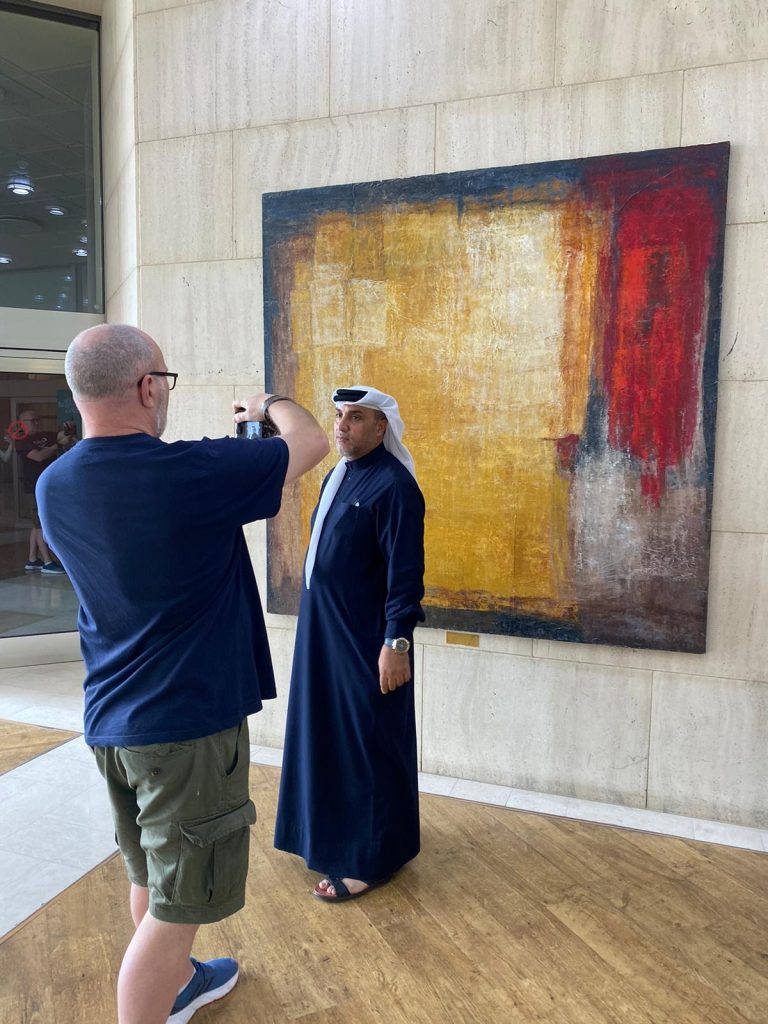
Here’s the thing: it doesn’t even have to be an event that interests you personally. A craft fair showcasing handmade goods might not be my cup of tea, but it’s a goldmine for photography practice. You’ll likely encounter many people, and chances are, you won’t be the only photographer there. That means you won’t stick out like a sore thumb – it’s a perfectly normal environment to have a camera in hand.
These events offer a low-pressure way to practice capturing candid shots, interacting with people, and experimenting with different techniques. You’ll gradually become more comfortable approaching people and asking for permission to take their photo, a crucial step in building confidence and honing your skills.

Events where people are dressed up for the occasion are perfect for practicing people photography! Take the photo above as an example. Do you think this gentleman dresses like this every day? Probably not. He’s aware he’s going to attract attention, and that’s part of the fun. Before I took this shot, I simply complimented his outfit and asked if I could take his picture. He happily agreed. That one interaction, that small success, is a significant boost to your confidence.
When people are dressed up and in a festive mood, they’re often more open to being photographed. It’s a chance to capture not just their attire, but also their personality and the energy of the event. So, seek out those opportunities, compliment people on their style, and don’t be afraid to ask for a photo. You’ll be surprised how often people are happy to oblige, and with each positive encounter, your confidence will grow.

Another event I attended recently was a 1940s day. Again, people dressed up and a great opportunity to hone in on your people skills.
Compositions
Events are a goldmine for discovering interesting subjects you wouldn’t typically encounter in your daily life. They offer a chance to slow down, observe, and practice your composition skills in a dynamic environment.
Composition, is about how you see and frame your subject through the viewfinder. It’s about considering the focal length of your lens, the aperture you choose, and how those elements affect the final image. It can be as simple as centering your subject or as complex as creating a multi-layered scene with leading lines, depth of field, and a unique perspective.
These events give you the opportunity to experiment with all sorts of compositions. You can try capturing candid moments, isolating details, or playing with unusual angles. The variety of subjects and settings will challenge you to think creatively and refine your eye for composition.

The photo of the skateboarders is a great example of using composition creatively. By choosing a 28mm wide-angle lens, getting in close, kneeling down, and looking up, you effectively eliminated a distracting background (in this case, a beach) and focused solely on the subjects and the railing. This simple yet impactful composition highlights the dynamic nature of skateboarding and the camaraderie of the group.
It’s also a testament to the power of asking permission. A simple request can open doors to unique and compelling shots that might otherwise be missed. By engaging with your subjects and explaining your vision, you can create a collaborative atmosphere that leads to more authentic and interesting photographs.
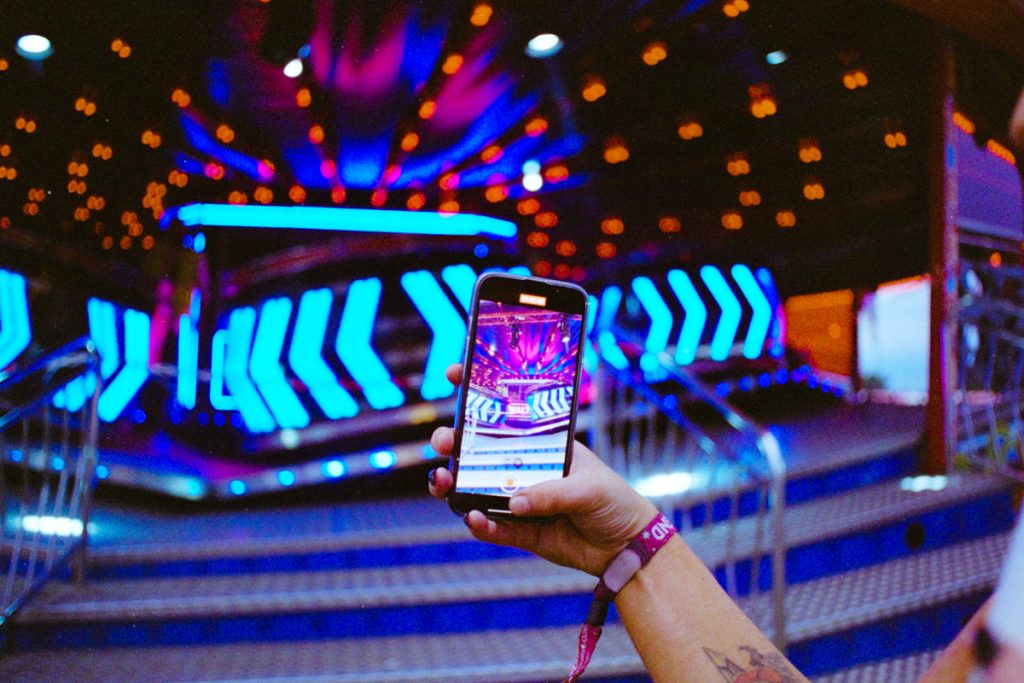
A quick photograph I took at a fair. The person with the phone had no clue I was taking this photo. It was literally snap and move on.

Back at the 1940s event there was a Spitfire there! How fortunate and what an opportunity. Had I not attended this photograph wouldn’t be in my collection! Back to composition I chose to look up toward the underwing and propeller mindful to keep the wing and gun in the shot. This composition works well because there is a lot going on at the event in the background which you can’t see. I didn’t want any of that in the photographs I took so I had to choose angles that didn’t show the event.
Street Photography

Street photography is a whole different ballgame, requiring a certain boldness and willingness to immerse yourself in the urban environment. There are two main approaches:
Street photography with people: This is the classic form, capturing candid moments of human life on the streets.It’s about observing interactions, emotions, and the unique characters that make up a city. It often involves getting up close and personal, which can be intimidating for some photographers.Street photography without people (Urban photography): This focuses on the urban landscape itself – the architecture, the textures, the light and shadow play. It’s about finding beauty and interest in the everyday scenes that often go unnoticed. While it may seem less daunting than photographing people, it still requires a keen eye for composition and an appreciation for the urban aesthetic.
Whether you call it “street” or “urban,” both approaches offer a unique way to document the life and character of a city. They challenge photographers to think on their feet, adapt to changing situations, and capture fleeting moments that tell a story.
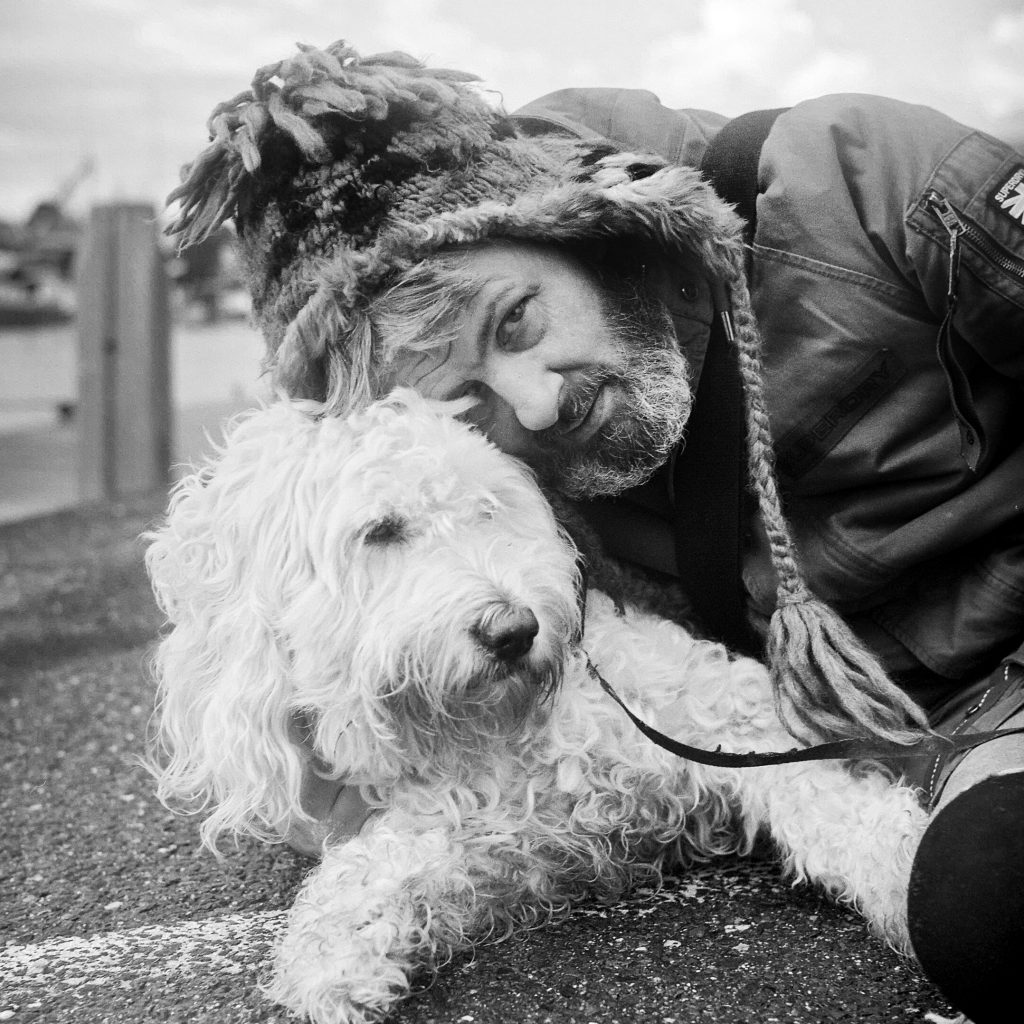
Over the years I have practiced a lot of street photography and I do enjoy all aspects of it, especially walking around back streets in a city. You often find the back streets and alleys are hardly untouched and still have a feeling of times gone by. Such as the print below of a cobbled street in Soho, London.
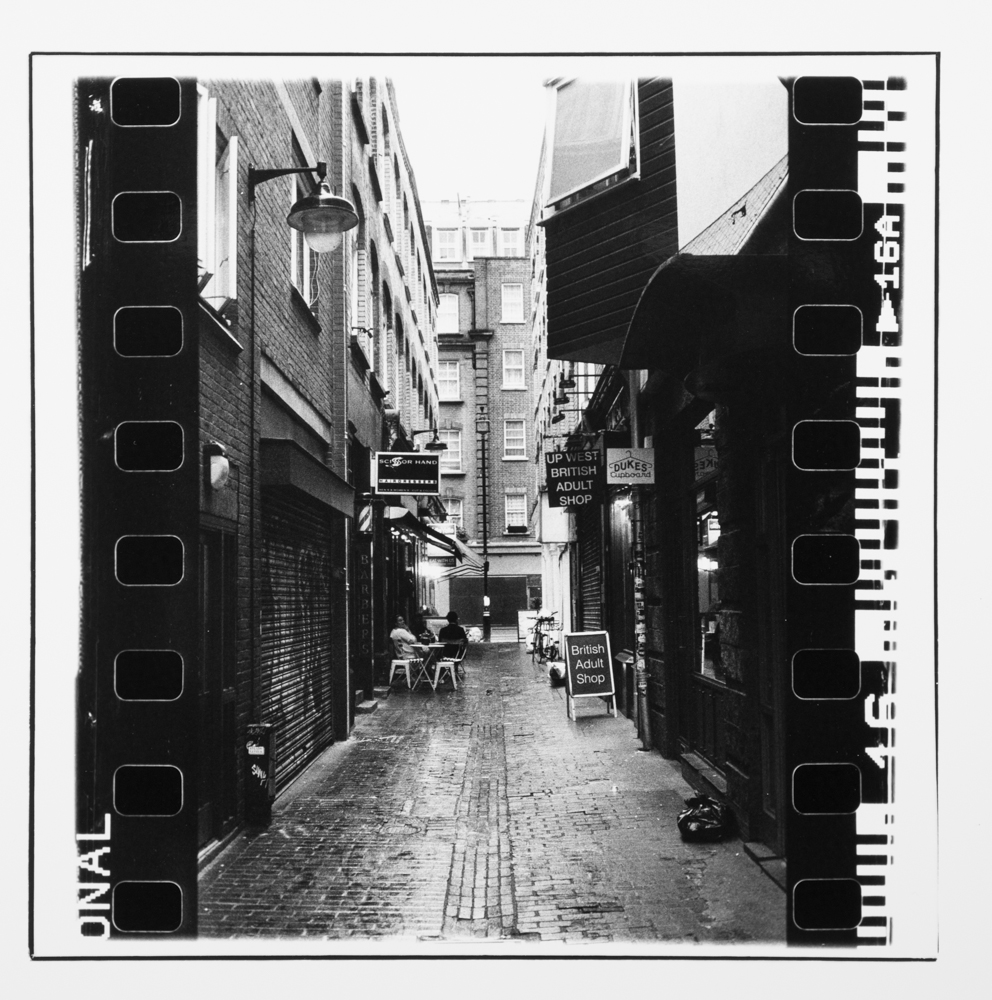
The streets offer a dynamic and ever-changing landscape for photographers to practice and refine their skills. With endless subjects and scenarios, it’s easy to feel overwhelmed. That’s why I find it helpful to go out with a specific plan in mind. Focusing on a particular theme, like buildings, alleys, or shopfronts, helps me stay focused and avoid distractions.


When it comes to photographing people on the streets, it’s essential to be mindful and respectful. Not everyone appreciates having their photo taken, especially in today’s world of social media. But a polite and courteous approach can often go a long way in getting permission and capturing great shots.
Not everyone on the street is a compelling subject for photography, especially when it comes to fashion. Earlier decades offered a much wider variety of personal styles compared to today’s trends. Think of the 60’s, 70’s and 80’s fashion. It was crazy! MODS, PUNKS, TEDDY BOYS, SPIVS leading on to the neon colours of the 1980’s, Walkmans, Ghetto Blasters, Roller Skates, New Romantics! A little bit more interesting than a Hoody and Crocs.
Unless you are in another country where everything is away from the norm back home. I found street photography in Bahrain was interesting purely because I don’t see this street life everyday.

However, when I do come across someone with an interesting look, I usually compliment them and ask if I can take their picture. If they inquire why, I simply explain that I’m documenting street life as a personal project. This honesty and transparency often put people at ease and make them more willing to participate.
Remember, street photography is not just about capturing images; it’s about connecting with people and documenting the human experience in its raw and authentic form. With a respectful approach and a keen eye for detail, you can create compelling images that tell a story and capture the spirit of the streets.

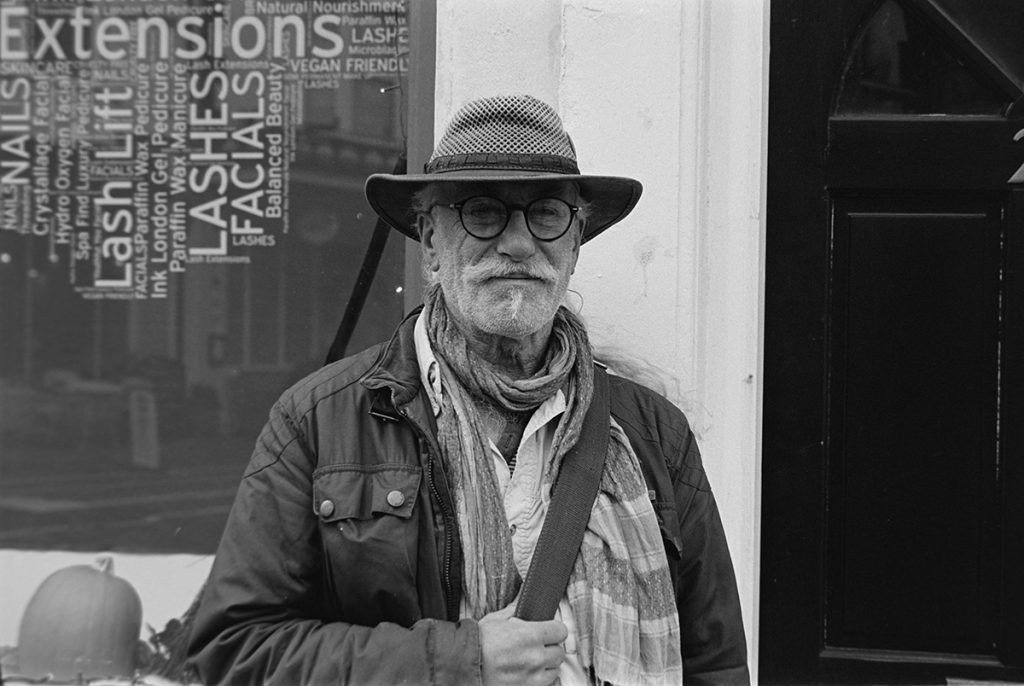
Just go for a photowalk!
When I’m feeling uninspired, I find that the simple act of packing my camera bag and heading out for a walk can work wonders. Even if I don’t have a specific destination or subject in mind, I often stumble upon something interesting to photograph along the way. There’s something about the act of wandering with a camera that opens up your senses and allows you to see the world in a new light.
Some of my most cherished photographs have come from these unplanned excursions. The beauty of this approach is that it removes the pressure of finding the “perfect” shot. Instead, it encourages you to be present in the moment, to explore and discover, and to embrace the unexpected.
So, if you’re ever feeling stuck or uninspired, don’t hesitate to grab your camera and go for a walk. You might be surprised at what you find, and the resulting photographs could be well worth the effort.

Such as this photograph of Reeves. It’s not something I would usually plan to shoot but I stumbled across this and watched as they swayed back and forth in the soft wind. So I slowed my shutter down took a deep breath and snapped away! This photograph would look nice framed and hung on a wall indoors. Just simple enjoyable photography!
So…
The key takeaway here is to embrace every opportunity to get out there with your camera and practice. Whether it’s a planned outing with a specific theme or a spontaneous walk around your neighbourhood, each experience contributes to your growth as a photographer.
Local events, regardless of the subject matter, offer a treasure trove of potential subjects and a chance to experiment with different compositions. Embrace the variety, keep an open mind, and use these events as practice sessions to refine your skills and build your confidence.
And for those who feel a bit shy about photographing people, remember that events are often filled with other photographers. You’re not alone in your passion, and seeing others doing the same can be incredibly encouraging.

Don’t be afraid to try new angles, get down low, or even lie on the floor for a unique perspective. Even if people give you strange looks, embrace it as part of the creative process. After all, as photographers, we’re constantly pushing boundaries and seeing the world through a different lens.
The Forgotten Nikons!

Ever wondered what it was like to experience the dawn of autofocus in the film era? Look no further than the Nikon F-501 (also known as the N2020 in the US), a groundbreaking SLR camera that merged classic film photography with cutting-edge autofocus technology.
You can watch my video on the SFLaB channel here.
Nikon have been an absolute beast of a brand in the camera market and have probably dominated the way for amateurs and professionals since the 1960s. And when you look online now for used Nikon SLR cameras there are many that come up showing their full masculine bodies and buttons with a hefty price tag too… And rightly so! When you think of Nikon F, F2, F3, F4, F5, F6, FE, FM, FM3A, F100, they are all fantastic cameras that have rocketed in price on the used market over recent years. And if you ask someone to recommend a Nikon Film SLR one of the above models would more than likely be mentioned. But they are not the cheapest.
I have some other more undesirable Nikon Film SLR’s that are not mentioned above and possibly wouldn’t pop up in conversation talking with someone wanting to get into the Nikon system.
And one of those is the Nikon F501. A Nikon Film SLR camera that was introduced in 1986 and continued through to the early 90s. A camera that oozed bags of control and functions to excite any enthusiast of the day and even tickle the fancy of a few professionals that wanted to have a back up SLR in their bag.

A Revolutionary Step Forward
When it was released the F-501 was a game-changer. It was Nikon’s first SLR with integrated autofocus, paving the way for the future of photography. Imagine the excitement of having a camera that could automatically lock onto your subject – a feature we now take for granted.
Features That Defined an Era
- Autofocus System: The F-501 featured two autofocus modes: Single Servo AF (S) for stationary subjects and Continuous Servo AF (C) for tracking moving subjects. It worked seamlessly with a select range of dedicated AF Nikkor lenses.
- Exposure Modes: Like a true SLR, the F-501 offered Programmed Auto (P), Aperture Priority (A), and Manual modes. However, it also introduced a unique “P Hi” mode, designed to prioritize faster shutter speeds for action photography.
- Motorized Film Advance: Say goodbye to manual film winding! The F-501 boasted a built-in motor drive with single and continuous shooting modes, capable of capturing up to 2.5 frames per second.
- Automatic Film Loading and DX Coding: Loading film was a breeze with automatic film loading and DX coding for automatic ISO detection. Simply pop in your roll of film, and the camera would take care of the rest.
- Bright Viewfinder and Informative LCD: The viewfinder displayed essential shooting information, including shutter speed, aperture, and focus confirmation. A top-mounted LCD panel provided additional details like exposure compensation and frame count. The viewfinder is 92% so you can expect a bit more on your negative than you initially framed for.

(Not exactly to scale, I made this in photoshop but gives you the idea!)
- Ergonomic Design and Solid Build: The F-501 felt great in your hands, with well-placed controls and a sturdy build quality that Nikon is known for.
- Internal through the lens metering: The camera has a metering system that is partial metering and works very well indeed.
- Audio warning! Nowadays you have to go into the menu system to turn this function on and off but the F-501 has a switch on top of the camera. It bleeps a sound when the camera is out of exposure threshold.
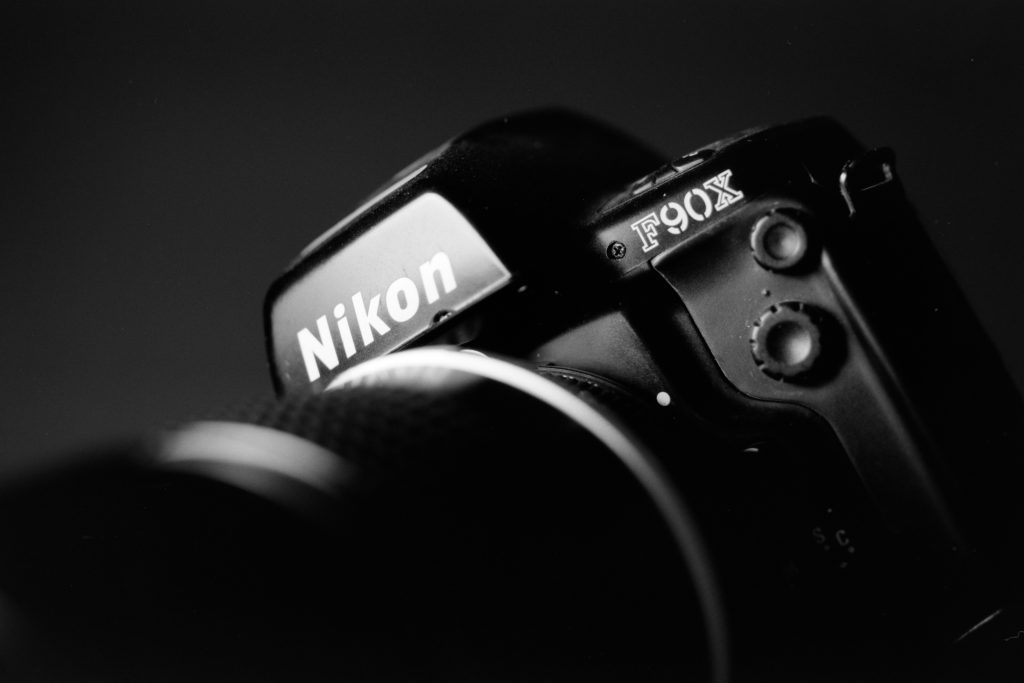
The F90X taken with the F-501 with Fuji Acros II Film developed in D23. 55mm Nikkor Micro Lens.
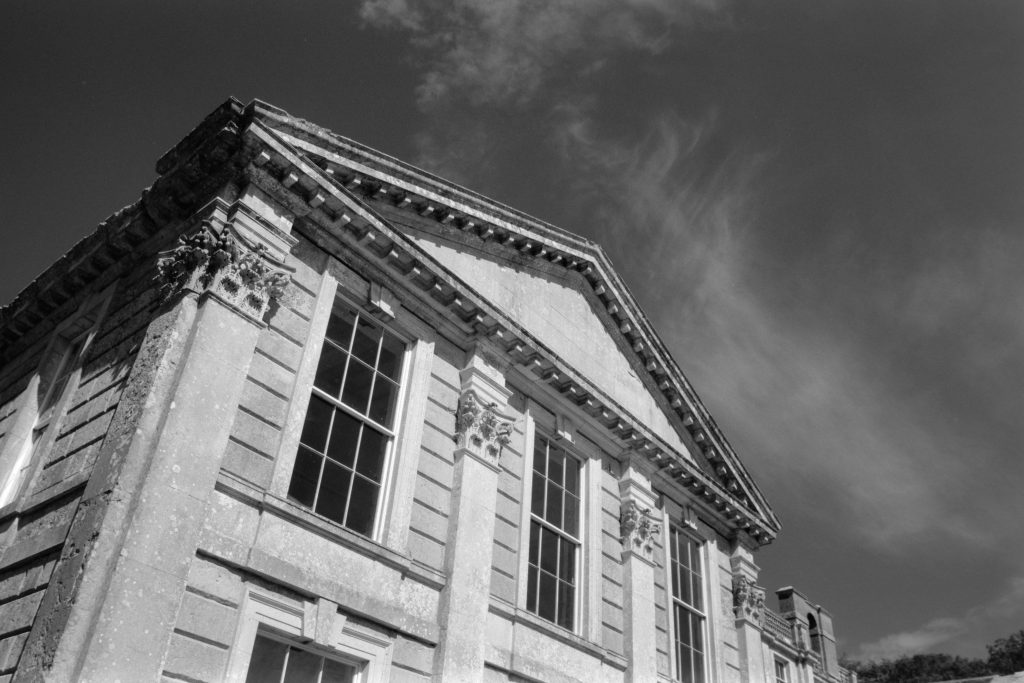
Appuldurcombe House, Isle of Wight, with Fuji Acros II Film developed in D23. 50mm Zeiss Milvus Lens.
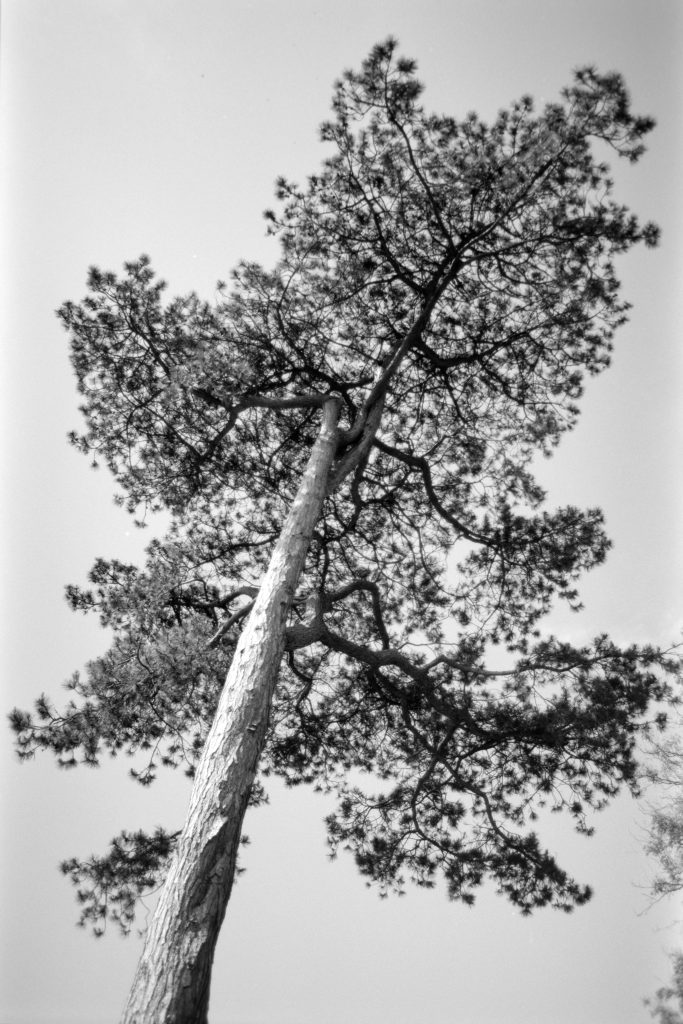

A bit too confident in my hand held abilities at 1/30th!
Why You Should Give the F-501 a Try
- Affordable Entry into Film Photography: The F-501 is often available at very reasonable prices, making it an accessible option for beginners.
- Unique Features: Experiment with the “P Hi” mode and dedicated AF lenses for a unique shooting experience.
- Nikon Quality: Enjoy the reliability and craftsmanship of a classic Nikon camera.
Conclusion
The Nikon F-501 may not be the newest kid on the block, but it represents a pivotal moment in photography. It’s a testament to innovation and a reminder that even older technology can be incredibly fun and rewarding to use. If you’re a curious photographer seeking a taste of the past, or simply looking for an affordable way to get into film, give the F-501 a shot – you won’t be disappointed.
And if you are looking to get into the Nikon system they are very affordable compared to other Nikon cameras leaving you with some cash for a couple of decent F mount lenses. Or a roll of film! Obviously price reflects the cosmetic condition! As you can see my one looks a bit shabby but that doesn’t stop it performing well inside.
They are fully electrical which means you need batteries to operate the camera. In which case you may find yourself without a camera if you don’t take spares! Luckily enough the camera takes AAA batteries which can be purchased almost anywhere on foot.
I’ve read in some cases the auto focus motor has packed up and the electrics fail but this one is still going strong since 1986! This can happen to any fully electronic camera of the same era and if this panics you then you may want to look for a different Nikon. A mechanical one. But for the price of these it’s worth a punt.
And if you’re a hands on sort of person and fancy tinkering there are some ‘non working’ cameras online for sale very cheap indeed which you can use for spares. But if you do buy a used camera online just ask all the necessary questions and if you can try and get a 30 day money back guarantee. Some sellers find these cameras in attics and know nothing of cameras. Always do your homework. But if you get one in good working condition then it should serve you well!

I was surprised at how much wizardry this camera packs in but I was surprised NOT to see a Depth of Field preview on the camera, which is a very useful tool to have.

A few more cameras I have used and are very good are the –
- Nikon F90X
- Nikon F-601
- Nikon F-801
- Nikon F55
- Nikon F80
PENTAX 17 Hands on Review

Is this the start of the Film Photography resurgence? I hope so!
Imagine if other major camera brands brought back film cameras! It’s a dream, but probably unrealistic. Demand would be limited, making them expensive. Yet, there’s hope!
- Nikon F7
- Canon EOS 2V
- Olympus OM24
- SONY 17
Thankfully, some brands are taking a chance. And Pentax, with Ricoh, has been developing the new Half Frame Pentax 17 compact film camera for years, which is exciting news. There are other new film cameras on the market too with Lomography and Alfie – a huge feat considering the challenges involved! Like the Rollei 35AF that is nearly with us.

This gives us hope that film photography isn’t lost. Maybe, just maybe, we’ll see a resurgence as more people discover the unique charm of analog photography.
Pentax 17 HF Camera
I was one of the first to receive the camera by Ricoh Europe in order to make a review, not only for the channel but also for Ricoh too. And I have to admit… I love it! So let’s show you the camera up close and some of the photographs I have taken with it so far..
Un Boxing!
Skipping quick through the unboxing on the SFLaB video, I was taken aback when the Pentax 17 first emerged from its plastic bag. The camera felt surprisingly light, especially compared to the hefty vintage models I’m accustomed to.
As I examined it, running my hands over its contours and settling into a shooting grip, two impressions dominated my thoughts: It was undeniably plastic, yet remarkably comfortable to hold. What was I expecting? A Spotmatic lookalike to come out of the box? This is 2024. Look at your TV!

But naturally, a modern camera like this will incorporate some plastic elements. The back door does feel a bit hollow when tapped, but overall, the construction feels decent and well put together. What truly impressed me were the metal base plate and top cover, lending a touch of durability. The buttons and dials exude a sense of quality with their smooth operation. Additionally, the leatherette front adds a touch of charm, elevating the camera’s overall feel. It’s well made. If you drop it it’s not going to fall apart, but hopefully you won’t and go and do what it does best. Take photos!
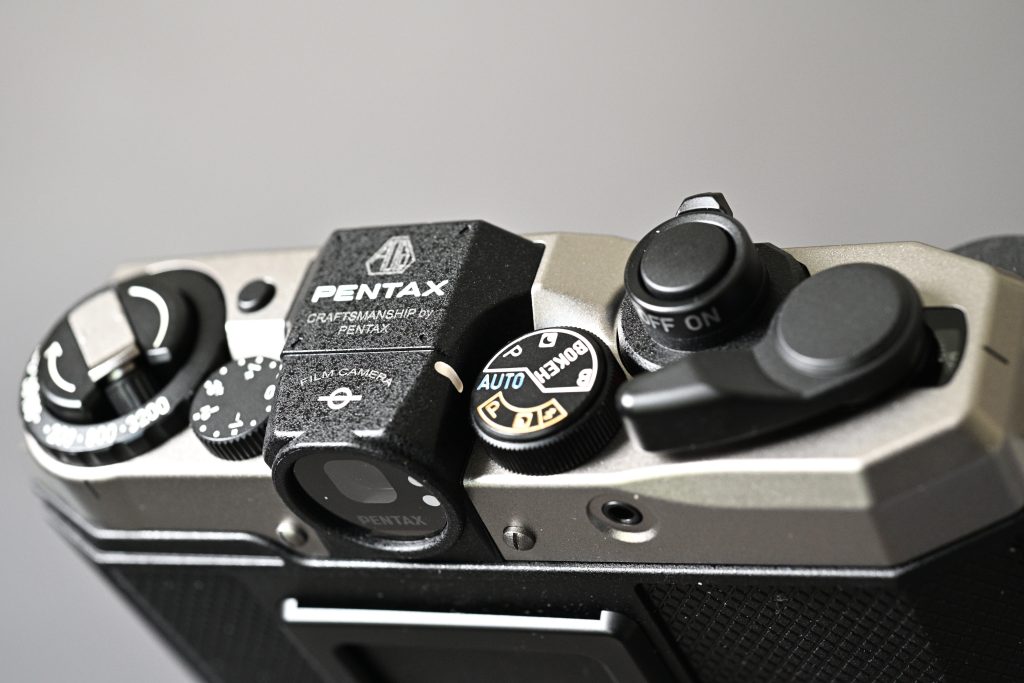
Half Frame

It is a half frame camera. 24×17. I have never really thought of shooting HF. It never attracted me. If I take photographs on film I want to at least have the prospect of toddling off into my darkroom to make some quality prints. And with HF I’d be compromising on quality. But having had this camera in my possession for a few weeks I think I understand its value. Getting double the amount of photos from a roll of film can’t be a bad thing if all you intend to do is scan and post and share online. You don’t need the quality of 35mm so I guess it makes sense and maybe that is the Market Pentax is aiming for.
I can see it would be ideal if I want to shoot film at the local car show or a mates wedding. Or maybe making smaller 5×7 Prints in the darkroom. At least my photographs will be cheaper. Of course it won’t replace my 35mm or Medium Format cameras but the option is there for some fun snaps on film.
Functions
Pentax has packed some impressive features into this camera. I was thrilled to see a built-in front flash instead of a pop-up one, which is a welcome design choice. The inclusion of an exposure compensation dial was another pleasant surprise. While there’s no dedicated exposure lock button, the compensation dial proves invaluable in situations with tricky lighting, like scenes with vast skies. It’s a clever workaround for ensuring proper exposure.

There is an ISO selector which speeds range from 50ISO to 3200ISO and a BULB mode too for timed exposures and a cable release socket which requires a CS-205 cable (not included). Hold up! What is included then? In the box you get a string wrist strap and a battery and a manual.
On the top of the camera is your mode selector jog wheel which boasts some decent functions – Here is a screen shot from the manual. But I will go through the modes.
I had to find out the hard way as when I received the camera the instruction manual was, well, let’s just say lacking some information! I now have the full manual which you can download from the Ricoh Website


AUTO Mode
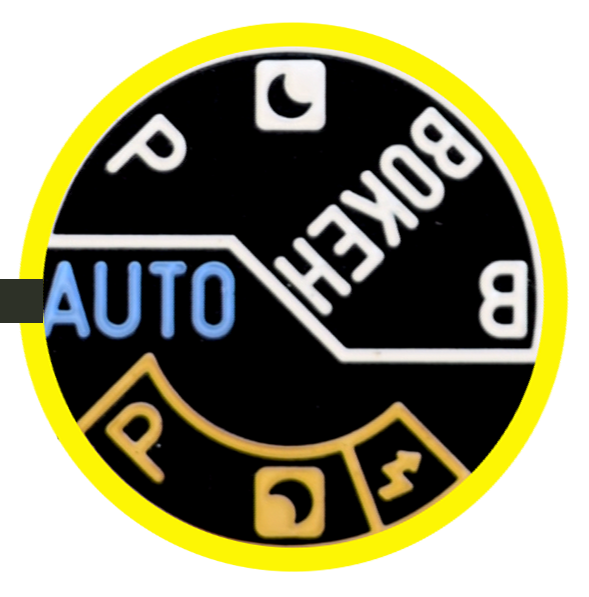
You can’t go wrong* in AUTO mode. Just select the speed of the film you are shooting (No DX Contacts) and fire away! The camera will control the aperture and shutter speed for a correct exposure by using it’s ‘Partial’ Metering system and if the scene needs a bit of extra light the camera will fire it’s flash.
The cameras shutter speeds range from 4 Seconds to 1/350th and the Lens Aperture is f/3.5. There is no indication with its smallest aperture but I suspect this to be f/22. And the Shutter and Aperture work in unison to give you the correct exposure for handheld photography.
*AUTO mode – If you’re less than a meter away from your subject. You can take the exposure but it won’t be in focus!
P Mode

If you don’t like flash then you can select “P” Mode. In this mode the camera will function the same as AUTO except the flash won’t fire. There is a Blue LED that blinks to tell you if you are over or underexposed before you take the photo. Shutter speed appears to be limited to 1/30th in this mode.
SLOW Mode
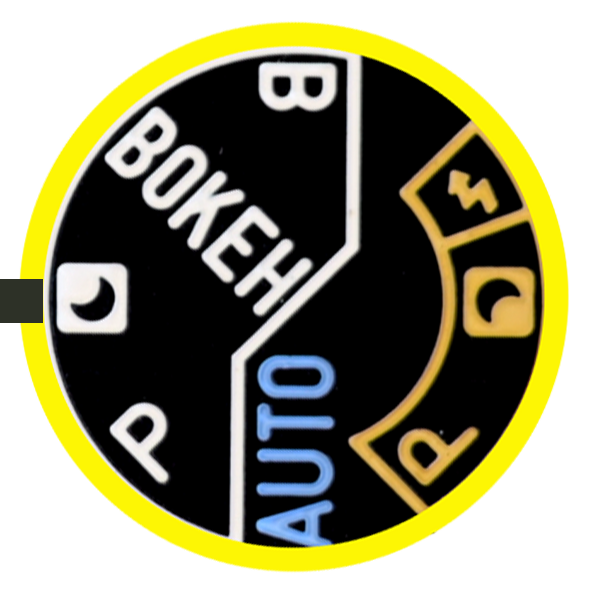
Slow mode is the white moon icon. This mode is ideal for tripod photography such as night time scenes where you don’t want the flash to fire and are looking for natural light or for wispy seascapes where you want some motion blur. Depending on the available light of your scene the most the shutter will stay open for is 4 seconds and will use its widest aperture (f/3.5). If after that the scene is still too dark the Blue LED will flash to tell you there is not enough light. You can still take the shot!
There is nothing in the manual that tells you how the Aperture and Shutter work together but I would imagine this camera is Aperture Priority (The camera chooses the smallest Aperture for the appropriate hand held shutter speed).
BOKEH Mode

It says in the manual that in this mode the aperture works at its maximum. Rightly so for BOKEH. But when I tested this by pointing the camera to the window in daylight the aperture closed down! I’m pretty stumped with this mode. Why didn’t the aperture open at f/3.5 and choose a faster shutter speed? I had the ISO selected at 50ISO. Oh well.
FLASH Modes (Yellow Area)
On the mode dial you will see two more modes in YELLOW. These two modes are ‘P’ Mode (Daylight Sync) and ‘SLOW SPEED SYNC‘ Mode (Moon). Basically one is a Program Mode where the flash will fire. And the other is ‘Slow Speed Shutter Mode‘, again, where the flash will fire regardless of the scene.
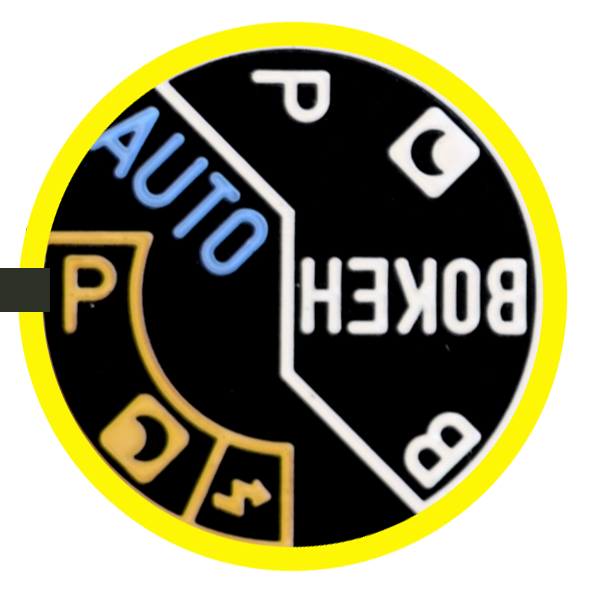
Yellow P Mode –
The flash is fired in for situations when the subject is backlit or in shadow. The shutter speed is up to 1/30s.
This could also be useful if you are photographing a party in a low lit room. The flash will fire, exposing your subject, and at 1/30th of a second to expose for the background also.

Slow Speed Sync –
When taking photos of a person against a dark background, the flash is fired at the person and the background is exposed using the slow-speed shutter. The shutter speed is up to 4 Seconds.
This mode could also be good for fancy trails after the flash has fired. Imagine taking a photograph of your friend at night in the street. Handheld. As the flash exposes your friend the shutter stays open after the exposure. Whip the camera in a circle motion and you’ll get street light trails.
BULB

When you are in Bulb Mode the Aperture will always be at its fastest, f/3.5. YOU control the camera so the metering will be disabled and so too will the exposure compensation dial and the flash too.
Indicators

On the viewfinder are two LED’s. One Red and one Blue and they tell you if –
- Under/Over Exposed
- Battery Low
- Camera Not Advanced
- Flash Charging
- Camera Too Close (Flower and Dinner Table Mode).

Shooting Struggles
I didn’t really have any struggles using the camera in various lighting conditions and it did the job well. Only one gripe here really is not knowing what my speeds were when taking photographs without the flash. Here is an example. These guys were in subdued light. I didn’t want the flash to fire so I chose ‘P’ mode and took the shot. I think it fired at 1/30th as you can see I have motion blur and possible handheld shake too. If the camera told showed me the shutter speed that would have been awesome! Yet, I don’t know how difficult that would have been to incorporate and I guess Pentax felt they didn’t need that. After all, not many point and shoots give this option!

The Lens
The lens combines elements of vintage cameras from RICOH and PENTAX. From the RICOH Auto-Half, it was possible to get an ideal/comfortable focal length the same 25mm.
From the PENTAX ESPIO mini, the optical design was used as a reference for sharp and clean images Using a triple element lens.

The lens also features HD coating, which maintains high performance of the lens, by using PENTAX multi-coating. This also enables high contrast and high definition right to the edges. It has an SP coating (Super Protect) which helps to repel water and oil from the lens. And my photographs go to show how good the lens is. Sharp from the centre to the edges and nice contrast.
I really expected the camera to roll out with a 35mm or 28mm lens.
Shooting
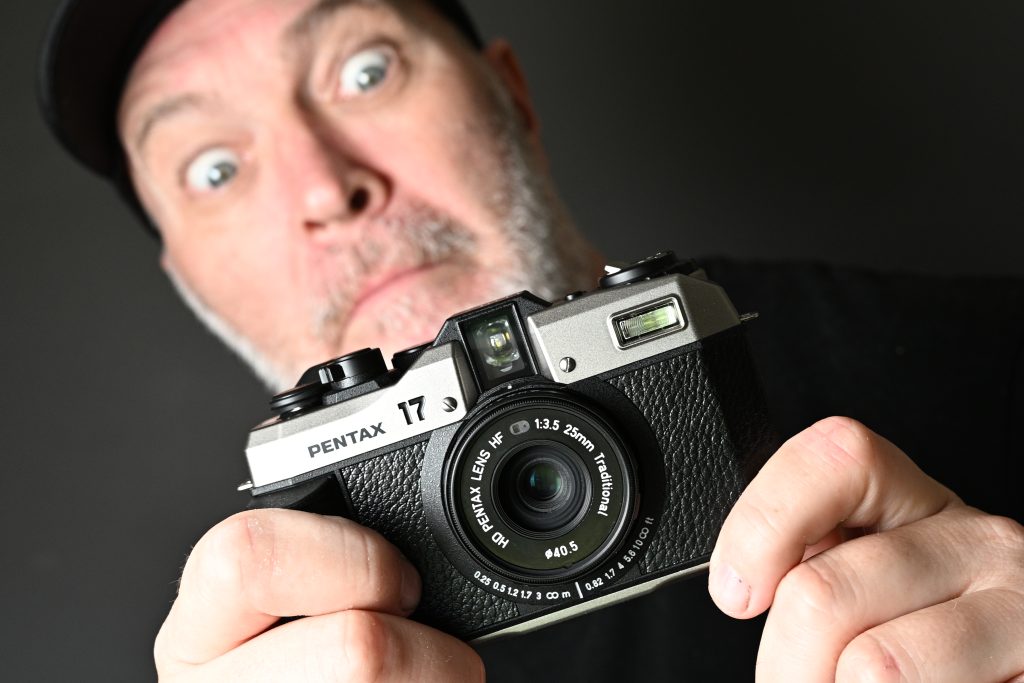
Never having owned a half-frame camera before, I was unsure if I’d enjoy the experience. But after shooting just two rolls of film, I found myself surprisingly delighted. The Pentax 17 is a no-nonsense camera that delivers accurate exposures with minimal fuss. Usually I am wandering with large format gear or my Mamiya RZ67 and other heavy 35mm cameras and lenses. This camera was small enough to slip into my pocket, a bit like my experience with the Rollei 35LED camera. Which is ideal for street photography.
Sure, while half-frame photography might not be ideal for printing large, high-quality images, it’s not about that. The Pentax 17, and other half-frame cameras, excel at something else entirely: pure, unadulterated fun.
Think about it – a 36-exposure roll magically transforms into 72 shots, and a 24-exposure roll gives you a whopping 48 opportunities to capture those fleeting moments. It’s the perfect tool for documenting everyday life, snapping candid photos of loved ones, or simply experimenting with a different format.
And let’s be honest, in the age of social media, most photos are viewed on screens anyway. The Pentax 17‘s half-frame format is perfectly suited for sharing your adventures online, without sacrificing any of the joy that comes with shooting film.
I went to Haven Street Steam Railway. There is plenty there to shoot! I found myself in that slow frame of mind, taking my time and being selective over my subjects and compositions and then remembered I had 48 photos to shoot! I was running out of ideas and then thought, ‘just shoot the S*** out’ of it! So I did!
Here are some of my results from shooting ILFORD HP5. The films were developed in my home made D23 Developer, rotary processed for 8 minutes.
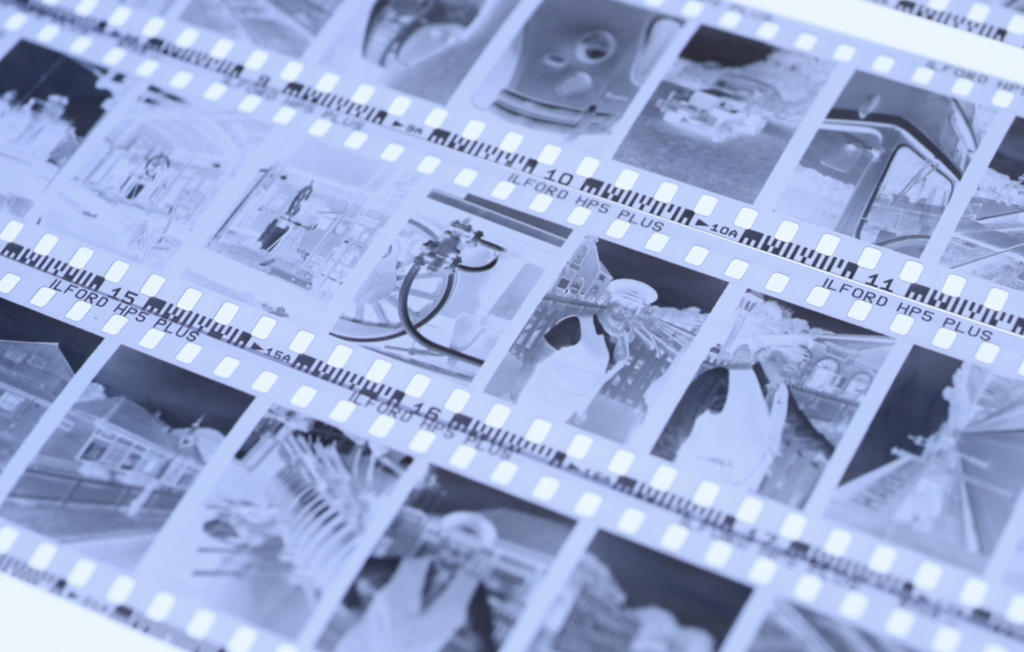


VIEWFINDER
The cameras viewfinder is very nice indeed, bright and accurate but I did find the guidelines a bit faint when the scene was bright. But it didn’t spoil the fun. It’s not glass.
I wasn’t accurate with some as you can see from the top photograph with a bit of a wonky line. There are two guides, one for normal distance and one for close up. It’s pretty accurate though! You can also see what focus mode you’re in. As you can see at the bottom of the illustration. Mountain!
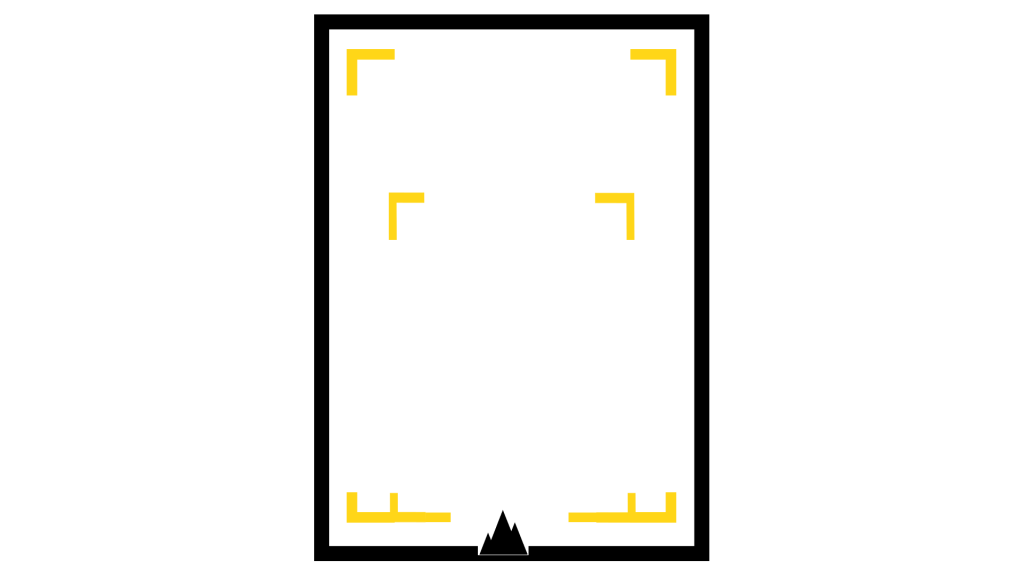
The viewfinder also seems to be very accurate for composing such as this portrait I took of my daughter in my studio. I used static model lights for this photograph. (APX 100).

And another I took using the cameras flash.

FOCUSING
The camera has the usual suspects of focusing modes, however, it also includes a distance scale too which is very handy indeed for Zone Focusing.

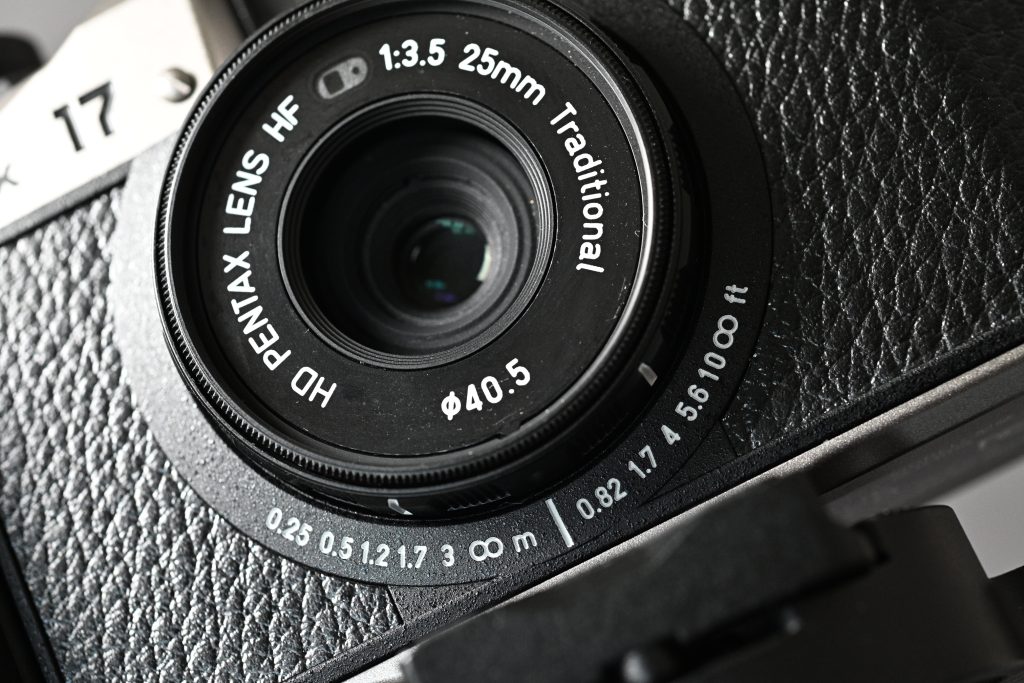
Here are the focusing icons and their respective distances from the manual.

In conclusion, Pentax has crafted an impressive camera with the 17. It’s sure to resonate with film photographers seeking a fun and accessible entry into the world of half-frame photography. While some may bemoan the lack of Pentax’s signature heavy metal construction, it’s important to remember that the joy of film photography lies in the experience itself.
The anticipated price of £450-£500 may raise some eyebrows no doubt, but it’s worth considering the factors at play. Engineering and design costs, wages, marketing, paperwork, investment, components, and materials all contribute to the final price. Additionally, the limited sales market, excluding mainstream retailers like Argos or Walmart, further justifies the cost.
Ricoh/Pentax are unlikely to price themselves out of the market. While the estimated cost might seem high to some, it’s important to remember that this isn’t just another point-and-shoot. We’re talking about a unique, innovative film camera with a design and feature set that caters to a specific audience. For those who value the tactile experience of shooting film, the doubled frame count, and the Pentax brand legacy, the price might be entirely justifiable. And for those who don’t fancy Half Frame you’ll just have to wait and see what Rollei have up their sleeves.
Ultimately, it boils down to personal preferences and priorities. If you’re someone who cherishes the tangible nature of film photography and seeks a fresh, exciting tool to capture memories, and don’t mind shooting Half Frame then the Pentax 17 could be a worthwhile investment.

Not too long ago, we questioned whether film would ever see innovation again, let alone new cameras, films, and chemicals. The Pentax 17 is a testament to the resilience of the film community and a promising sign of exciting developments to come. Let’s embrace this new era of film photography and celebrate the creativity it fosters.
Photographs show Ilford HP5 unless otherwise stated.
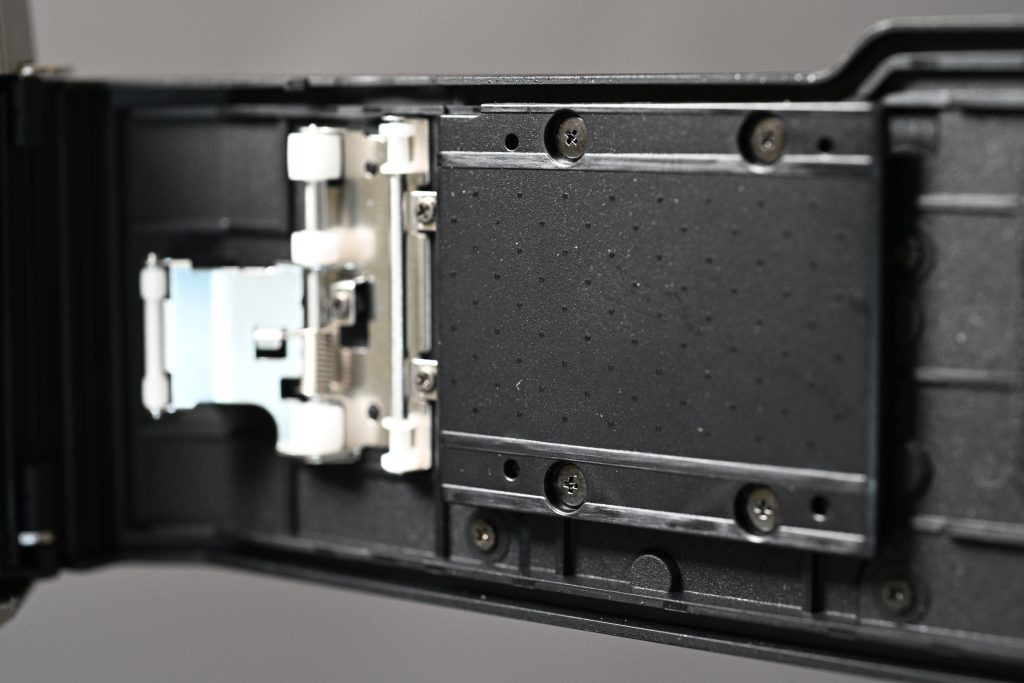
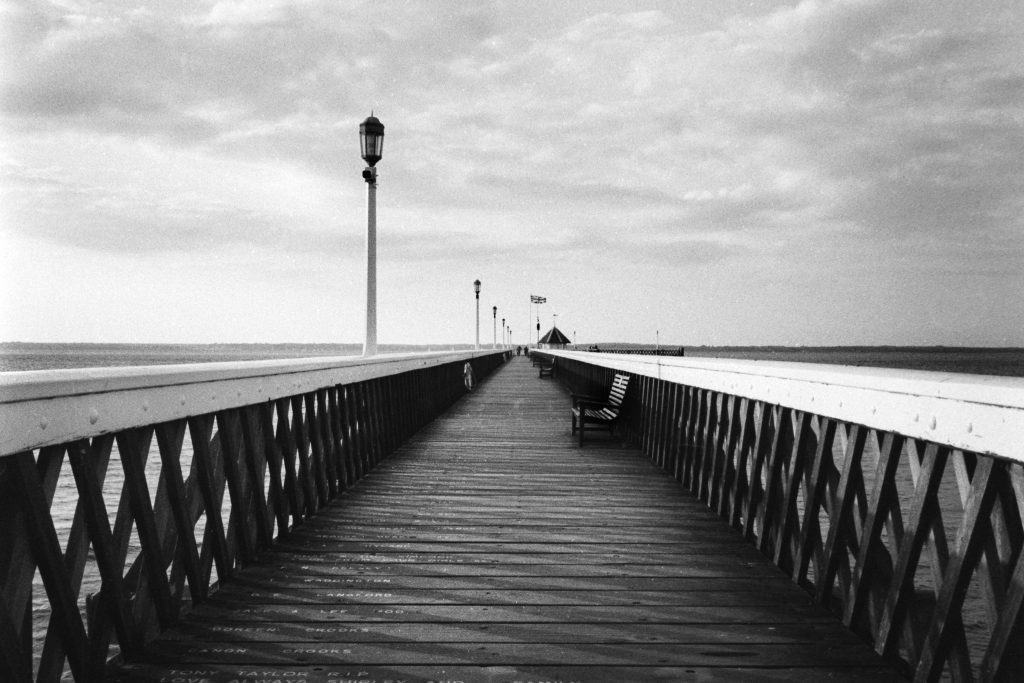


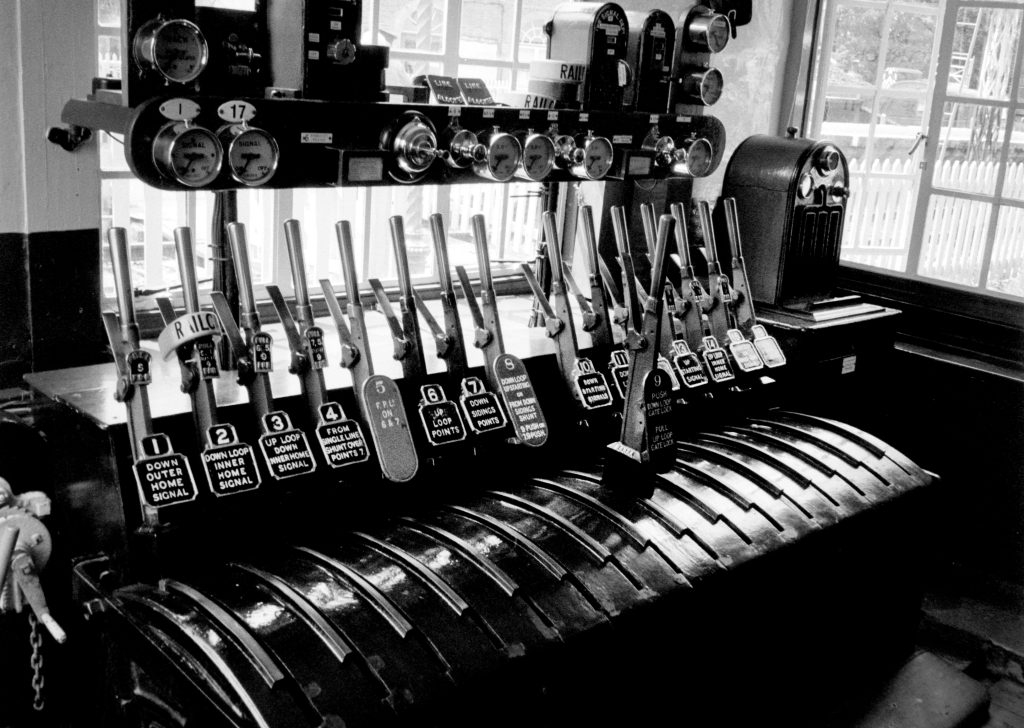
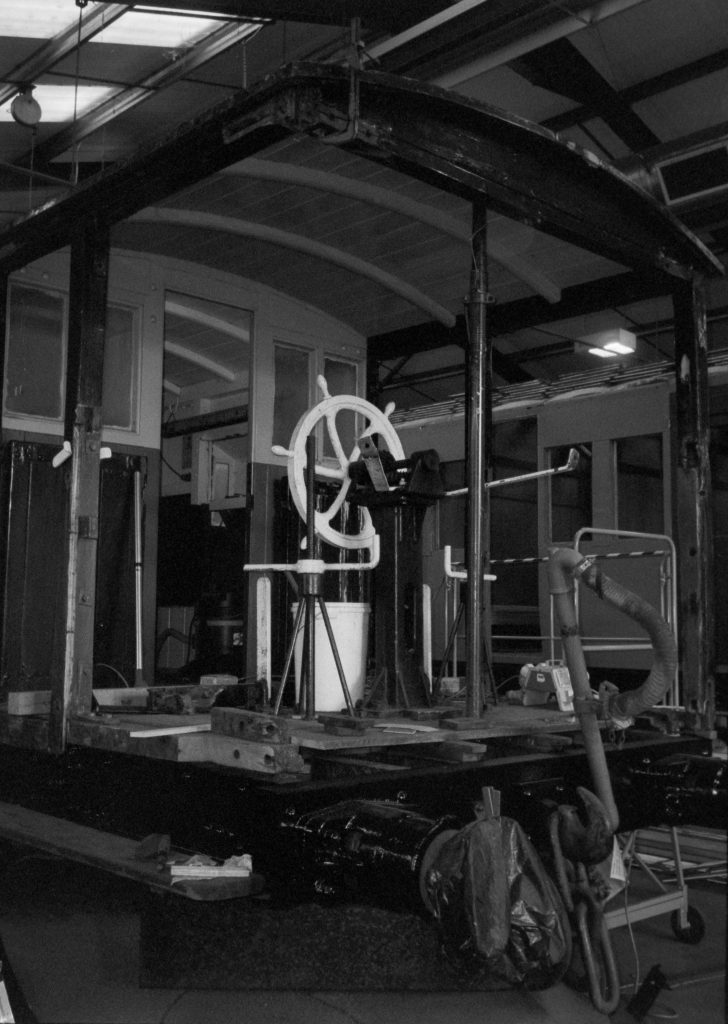
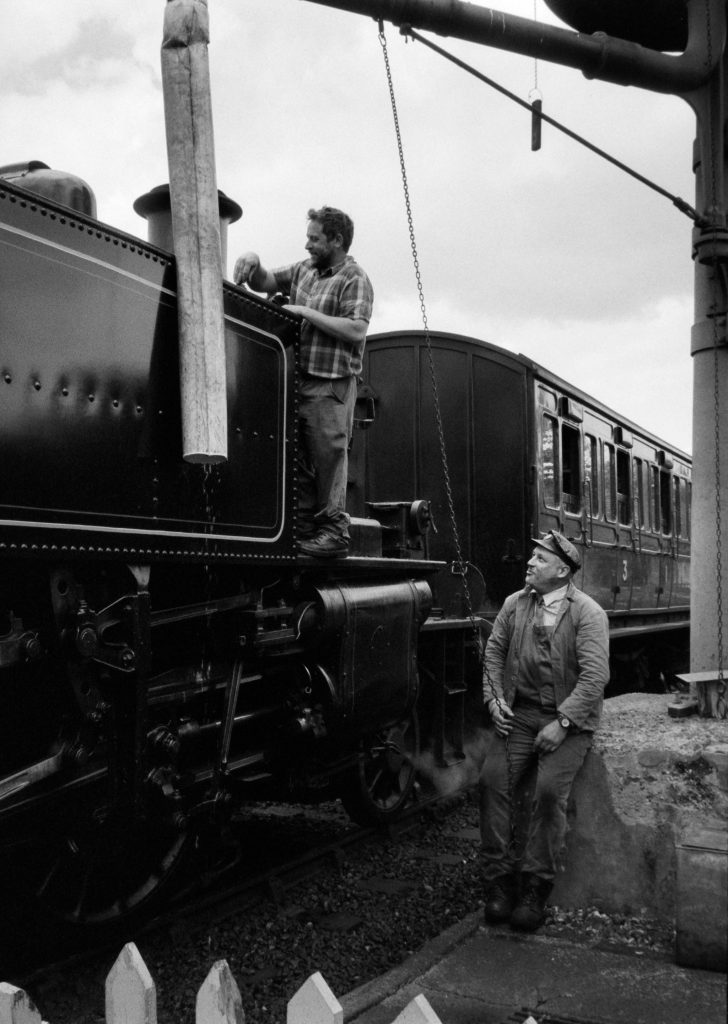

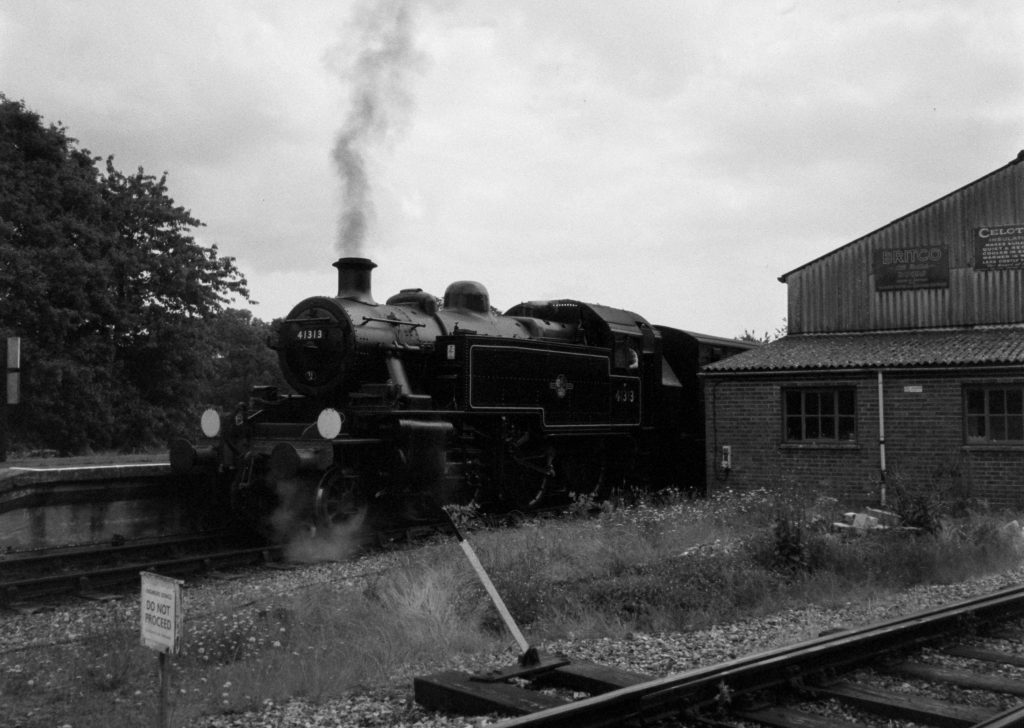
AGFA APX 100
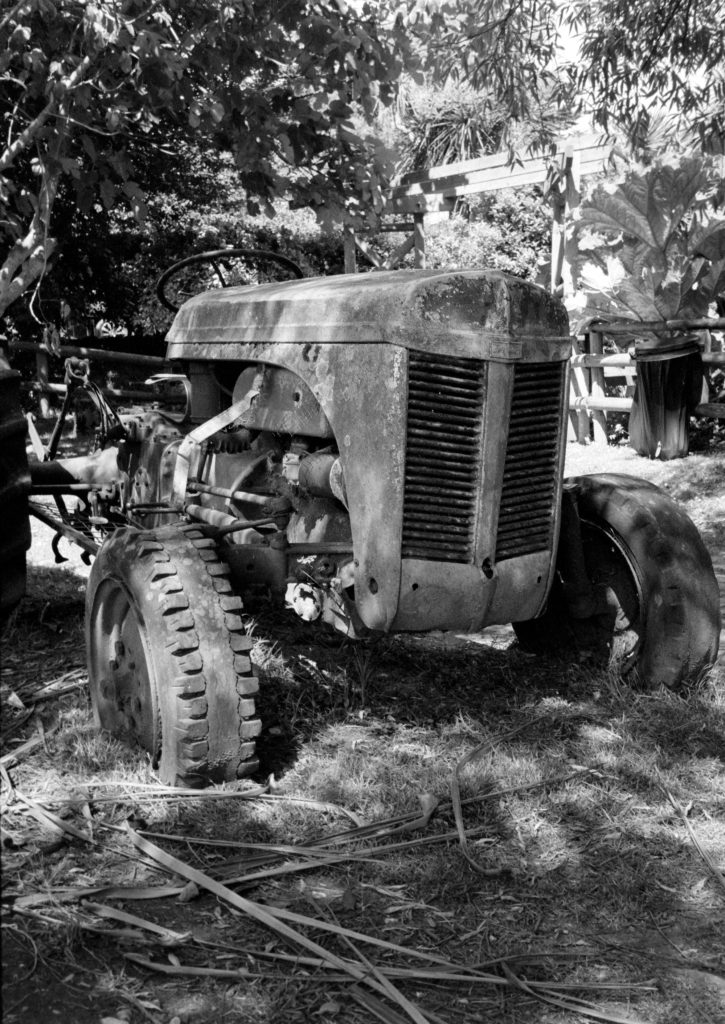
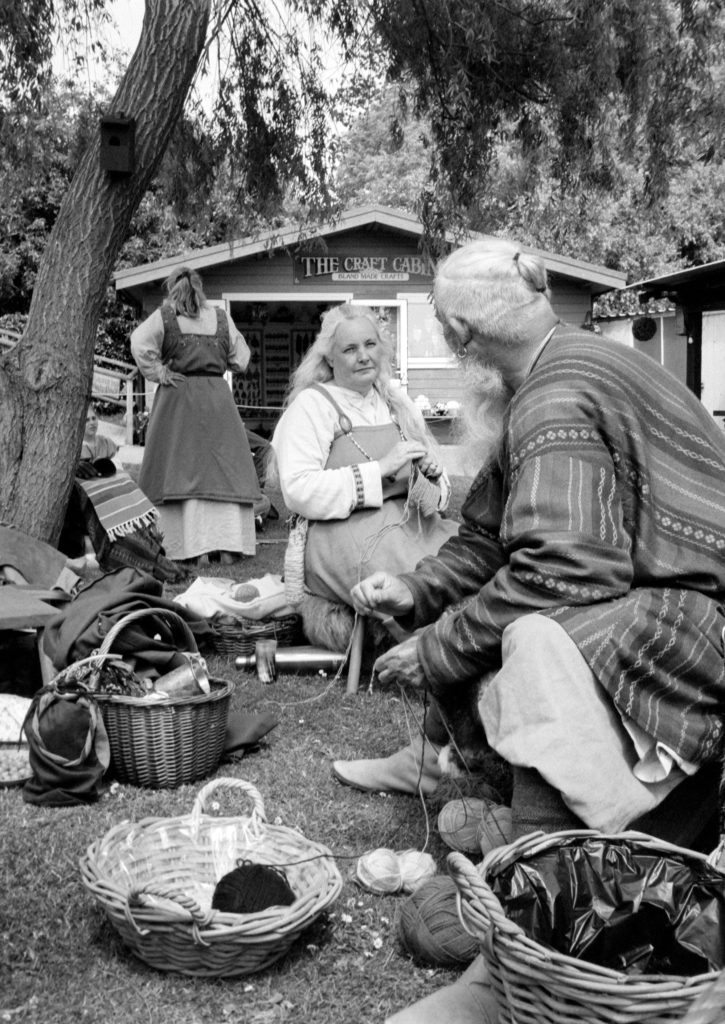


If you read this to the end then thank you for reading. I am in no financial affiliation program with Ricoh/Pentax and so these views are my own without influence.
Cheers!
Roger.
Pentacon SixTL Care
Pentacon Six TL Curtain Shutter Burn
Having been the proud owner of a Pentacon Six TL for some time it is a camera I really enjoy shooting but it is not without it’s common problems and one recently I discovered that could be costly to repair!

I was making a Vlog for the channel. You can see the video here.
I stopped and place my camera bag down, opened it and got my Pentacon SIX TL out of the bag intending to pick it up and show on camera. I placed the Pentacon on top of my bag with the lens pointing up toward the sky, not intentionally and for no reason other than I was going to pick it up a few moments later to show the camera on video. This was before I had taken a single photograph.
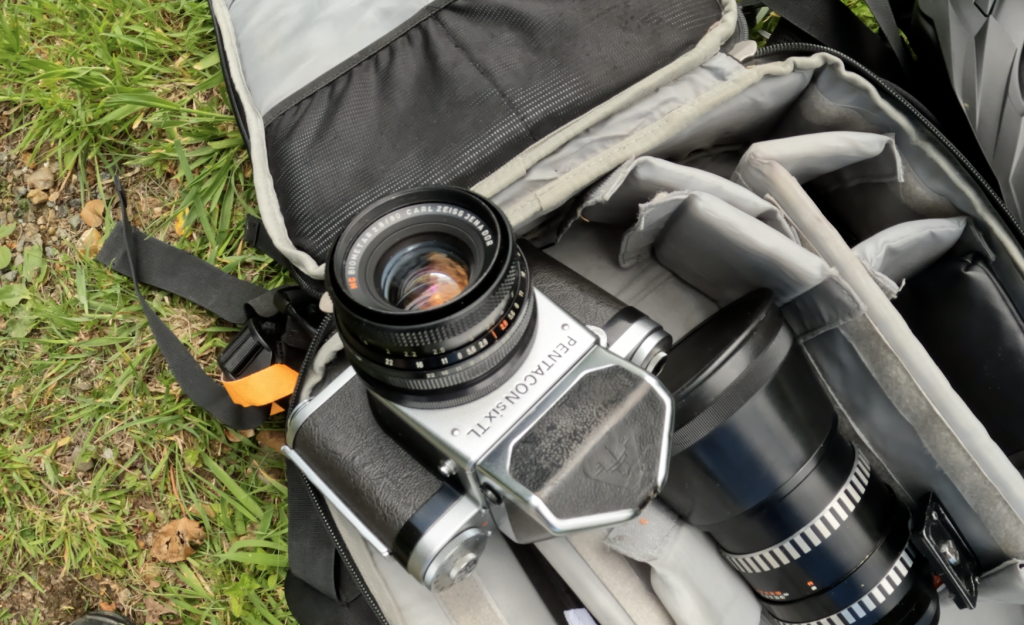
The fact that I was making a vlog at the same time contributed to this error but in a similar situation anyone may possibly put the camera down like this for a number of reasons during a shoot.
As the camera was staring up at the sun the lens acted like a magnifying glass and burned a pinhole into the cloth shutter behind the Lens.


I only discovered this after the shoot when I developed the film. I noticed I had a light leak.

It took me a while to investigate how this happened and it was only after I returned to the video footage I could see the curtain was fine when I loaded the camera with film. So something happened after that and that is when I noticed I had left the camera pointing up toward the sun!
This is typical for Leica cameras and Fed cameras because there is no mirror inside the camera to protect the cloth curtain. And you may think because the Pentacon Six is an SLR camera (With a mirror) the mirror sits between the lens and the curtain and protects the curtain from this apparent disaster. But with the Pentacon Six the mirror only comes down between the lens and the curtain when it is advanced. If the camera is not advanced the mirror stays UP and if the camera is pointing toward bright sun at the right angle (and no doubt aperture also plays it’s part, I was at f8) the sun will magnify through the lens and burn a hole in the curtain.
How to fix it.
The best way really is to have the curtain replaced by a professional camera engineer. But that can be costly. Luckily I have a sheet of Silk shutter cloth so I cut a small square piece and using fabric glue just placed it over the pinhole making sure it was perfectly flat and sealed in all corners to prevent it lifting.

It looks messy I know! But I didn’t want to damage the cloth any further by trying to pick away at the excess glue. And after testing the leaks have now gone. The patch clears the shutter flow as it is advanced and fired and also doesn’t scratch the film. So I will leave the camera like this and observe the repair each time I shoot the camera.
Another way you can temporarily repair such damage is by using Liquid Rubber and dabbing it to seal the hole.
Or if you want to try my way with a patch and don’t have a sheet of curtain (Why would you!) you can always look for a damaged camera online that is cheap and has a cloth curtain and cut a patch from that curtain.
The best way to avoid all this is not to leave the camera pointing toward the sun without a lens cap on! Or get into the habit of advancing the camera after each exposure. That way the mirror will advance between the lens and curtain protecting it. (WARNING: Check your cameras manual about changing shutter speeds after advancing. The TL Manual says you can change speeds before or after advancing)

It appears to happen when the camera is staring at the sun for a longer period of time as apposed to generally walking around looking for compositions so don’t let it put you off your normal workflow. Just be mindful not to let the camera stare at the sun too long when it’s placed down out of use with the mirror up!
Advance Lever
Another issue I came across was the advance lever working itself loose! Mine actually came off the camera as I was talking into camera and fell onto the floor! Luckily I found the three parts and simply screwed the lever back onto the camera.


The only other things I can mention bout this camera is to treat it like a baby! No rough handling. For example when you advance the camera don’t let the advance lever snap back. Gently feed it back with your thumb. Rough handling here can cause the internal components of the camera to fail.
So there you go. A bit of hands on experience with the camera that I hope will help others.
Film Ferrania P33

Film photography enthusiasts, rejoice! Film Ferrania, the resurrected Italian film manufacturer, has added another gem to their lineup – the P33, a black and white film with a unique character.
This is what I read up about the film.
What Makes P33 Special
- Fine Grain & Detail: The P33 delivers beautifully fine grain, allowing for incredibly detailed images. This makes it perfect for capturing intricate textures and subtle nuances.
- Tonal Range: Expect gorgeous tonality, with smooth transitions and a wide dynamic range. Your photographs will have a beautiful depth and classic black and white aesthetic.
- Improved Usability: Unlike its predecessor, the P30, the P33 is designed specifically for easier development and printing, giving you more flexibility in the darkroom.
- 160 ISO Versatility: The medium speed of ISO 160 makes the P33 suitable for both sunny outdoor scenes and well-lit indoor situations, providing a great balance.
And I was lucky to get my hands on a few rolls from The Little British Camera Company
I was eager to try this film out having shot many rolls of the popular P30 Motion Picture Film that Ferrania have had out for many years now and see if P33 was similar. In that I mean if it is as contrasty as P30.
And here are tow YouTube Videos I put out recently using this film:

For my first roll I used Rodinal and I had to do some tests first as on their data sheet Ferrania recommend 1+25 for 5 minutes. I thought that was a bit short for a 160 ISO Film, and after doing some tests I was happy at 10 Minutes. Double the time they suggest. My 5 minute tests were very thin.
As expected good ole Rodinal tells no fibs and I was greeted with nice negatives, easily printable and with a pleasing grain for the photography I was shooting, Street.

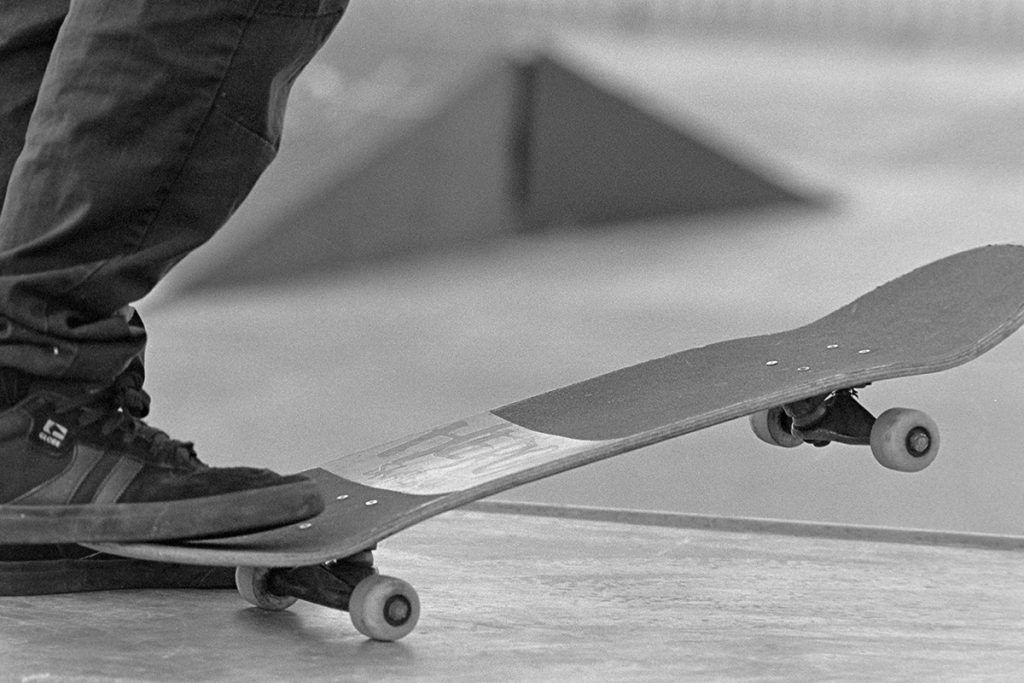
I didn’t find the contrast as punchy as their P30 Film, except when I shot my second roll at the local farm I used the Rotary Processor. Ferrania recommend Hand Process only for this film. And I used a new developer that I am testing at the moment from Zone Imaging (due to be released soon).
Rotary Process:



Noting the contrast, which was more evident on the negatives I shot another roll and used the same developer with a bit more time and this time hand developed the film. I managed to get much better detailed negatives, still with contrast, but with more detail. And as for the grain, it’s very fine indeed!
And you have to excuse me for not printing these negs and others recently. The Darkroom is a tad bit damp!
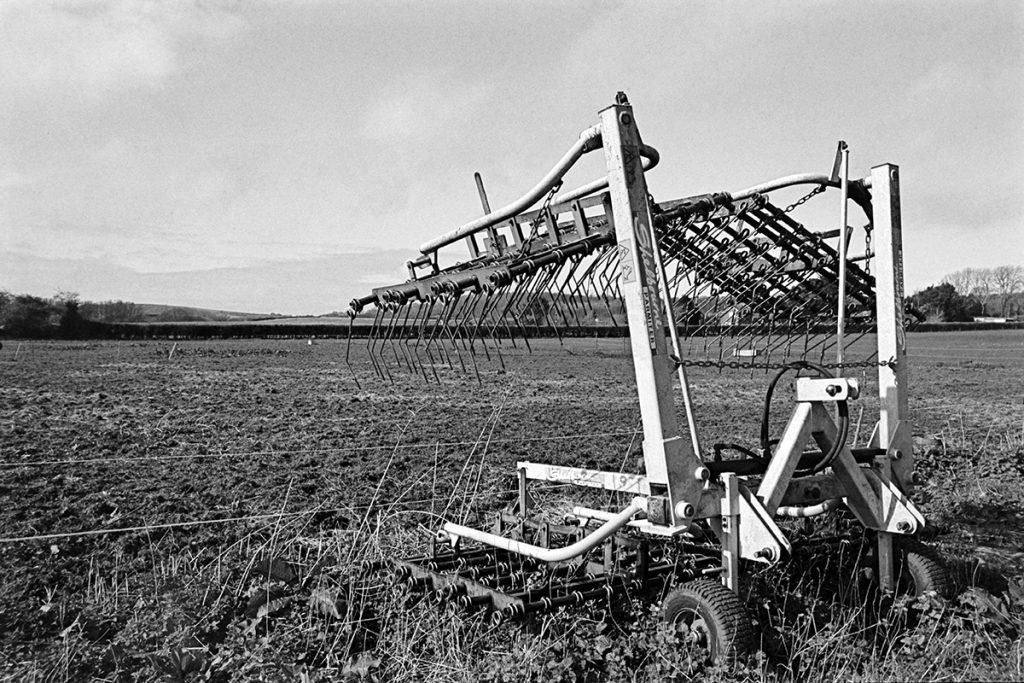

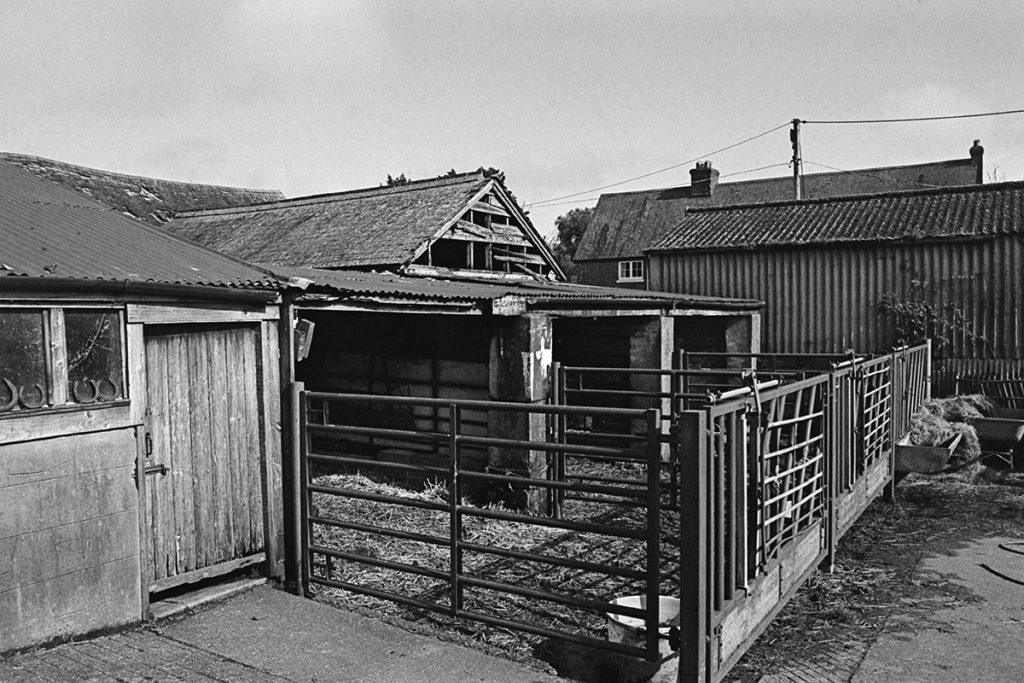
But this film certainly does seem to have a unique look with the highlights appearing slightly bloomy, nice tonality and a deep contrast. But as we all know the look of any film is controlled in development. I’m thinking how this film would looked pulled! Something I may try another time. Or even in 510 Pyro! I’m not sure I will venture with Rodinal with this film again though. I felt that was a bit harsh.
But with so many films on the market I am wondering if this new P33 film would be great for my street photography or even portraits. There’s no harm in trying out and experimenting with different films to see if they could work with your regular work be it portraits, street or scapes and give a different feel.
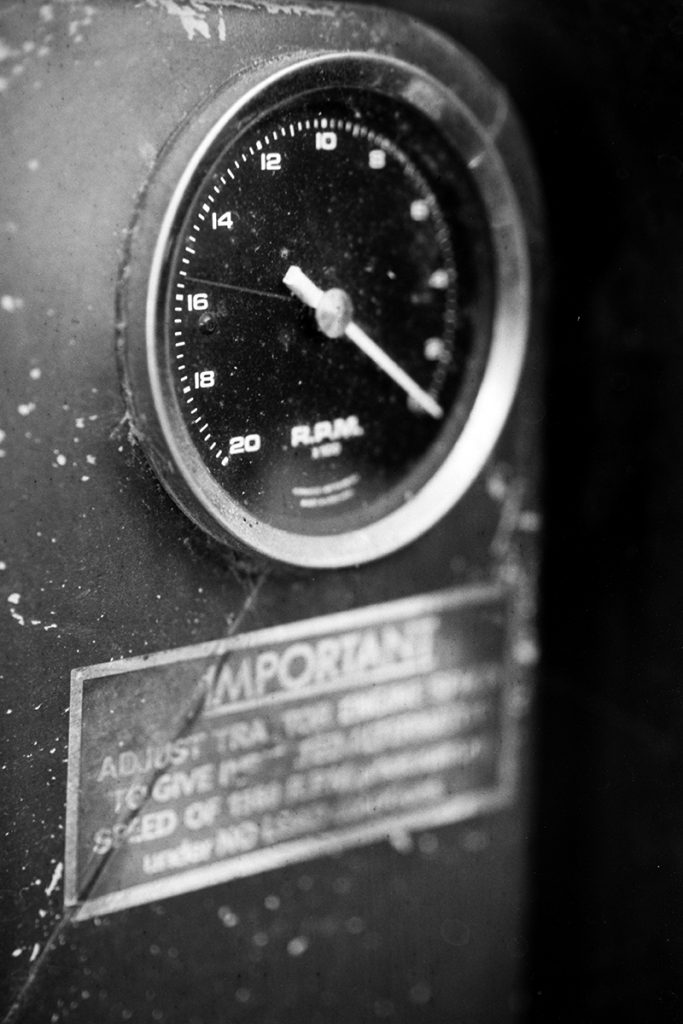
Whether I use the film again and experiment you have to admire the dedication and, no doubt, tremendous effort Ferrania have put into this, actually very nice, film and their other films, and keeping film alive for the community to enjoy.
Why the Olympus OM-20 is so underrated

A camera I hardly see being mentioned is the fantastic Olympus OM-20.
Recent YouTube Video on this camera:
It has all you need to take great photographs on film, especially for beginners, and it does so with elegance and charm weighing in at just 430g. But why do you see so little of this camera with its older brother, the OM-10, taking most of the limelight?
Olympus stunned the photographic community back in 1972 when it unveiled its new OM System of camera, the OM-1. It was then, apparently, the world’s smallest 35mm SLR. It was originally called the ‘M-1‘ but the Germans got the hump as they already had the Leica M1. So a year later in 1973, no doubt after a costly and lengthy court battle, Olympus had no option than to put the letter ‘O‘ in front of it, and the OM series was born! And it went on through the years.
- OM-1 1972/3-1979
- OM-1 MD 1974-1979
- OM-1N 1979 – 1987
- OM-2 1975 – 1979
- OM-2N 1970 – 1984
The OM System went from strength to strength with many OM’s being manufactured from the 1970s all the way into the 2000’s finishing with the OM-2000 but the flagship of all was no doubt the OM-1. A classic still to this day that can fetch a pretty penny on the used market.
But let’s jump back to 1979 when Olympus released the mighty OM-10, a camera that is still sort after today with a decent price tag for such a brilliant camera. And before you wonder, there was no 5, 6, 7, 8 etc. Olympus finished the OM-2 in 1979, and in that year started the OM-1N, the OM-2N and a new concept, the OM-10.
The OM-10
Olympus designed the OM-10 with a specific type of photographer in mind:
- People who wanted to step up from simple point-and-shoot cameras but were intimidated by the complexity of traditional SLRs such as the OM2.
- Photography students looking for an affordable, high-quality camera to learn the fundamentals on.
- Hobbyists wanting a more serious tool for creative expression but who didn’t necessarily need top-of-the-line professional features.
The OM-10 was easy to carry and less intimidating to use. Its simplified controls and focused on the essentials.
It retained the excellent build quality and the renowned Zuiko lenses of the OM system, making it a fantastic value proposition as well as offering automatic exposure allowing users to choose the desired aperture (Aperture Priority), while the camera automatically selected the correct shutter speed for a well-exposed image. Although targeted at beginners, the OM-10 could be expanded with a shutter dial accessory for full manual control.
The Olympus OM-10 was a massive commercial success, selling millions of units and earning a reputation as an accessible gateway to serious photography. It helped usher in an era of more user-friendly SLR cameras that appealed to broader audiences. Many people who started their photographic journey with an OM-10 fondly remember its role in developing their skills and passion.
Arrival of the OM-20
As the OM-10 was still selling to the masses of professional and enthusiastic photographers they must have thought it was time to include a dedicated shutter speed system into the camera and in 1983 the OM-20 was released (OM-G in North America) and I’ve often wondered why they didn’t call it the OM-10s or some other fancy end letter. But they decided to call it the OM-20 but it ran for only a short time. By now the OM-4, which was also released in 1983 continued to run with different variants right up until the late 2000’s. But the OM-20 stopped in 1987. The classic OM camera had pretty much finished and Olympus were trying to keep ahead of the game with the modern designs. Yuk! Just google some images of the Olympus OM-707AF or 707 and you’ll see what I mean.
Maybe Olympus knew they were never going to be able to compete with the likes of Nikon and Canon for high end cameras and put their energies into the compact camera market as they made loads of them and if I remember back in the 90’s those Olympus compact cameras were very popular and very good quality. Just look at how successful the Olympus Trip was! Even David Bailey endorsed it! (I bet he never used one though).
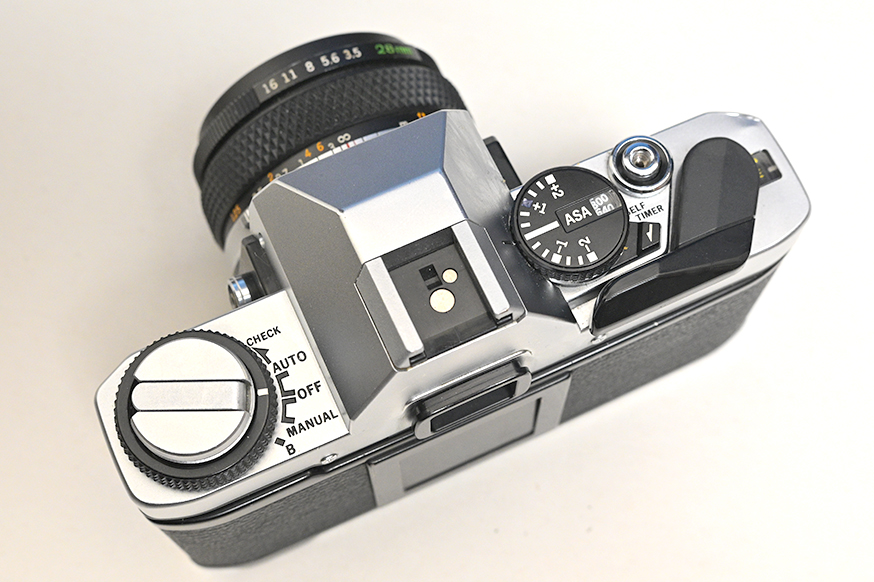
For any film shooter today this camera has it all, or at least all you need to take pictures on film without a heavy price tag and complicated menu system, (thinking of Nikon F5 and 6), and a camera that looks every bit as nostalgic and classy as the usual suspects from the 70’s and 80’s. Plus, it takes those wonderful OM System Zuiko lenses AND it’s small and light weight!.
It’s also a conversation builder too! I’ve had many folk stop me in the street when they see Olympus, then proceed to ask me if film is still made! I love these conversations with strangers.
It has the same metering system as the OM-10 which was called OTF Metering (Off The Film) which was supposed to be very accurate where by, in auto mode (Aperture Priority), would take the light reading as soon as the shutter opened from the film surface and change the shutter speed accordingly. I suppose if you think with normal TTL metering the light could change at the instant the mirror lifted. With OTF the camera measured the light at the instant it hit the film surface. The light cell is located just under the mirror pointing toward the film plane.

But what Olympus did was to eliminate the use of the shutter dial accessory and included a new shutter speed dial on the lens mount bringing the camera more up to date and inline with other AP/Manual cameras of it’s time.

The cameras were identical apart from a few improvements.
Both the OM-10 and OM-20 have the same ASA range, 25-1600 and the same shutter speed range, 1s – 1/1000th.
The OM-20 included an overexposure warning in the viewfinder and a hot shoe dedicated contact point for standard electronic flash sync (X-sync), making it easier to use modern flashes without additional adapters.
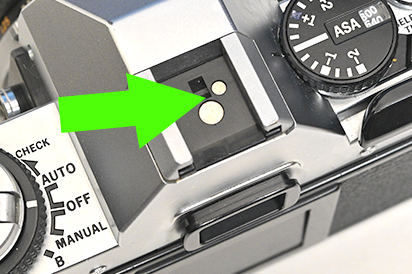
The OM-20 also provided more control and a few quality-of-life improvements for photographers wanting to delve into manual exposure settings. The OM-10 catered more to those who valued pure simplicity in an aperture-priority system.
Why underrated?
So why does the OM-20 have less popularity than the OM-10?
I can imagine back in 1979 for anyone wanting to get into the OM System the less expensive choice would have been the OM-10. The OM-20 would have been slightly more expensive because of the modifications and I would imagine the sales of the OM-10 would have declined, apart from those that would just wanted simplicity then aperture priority was King and would have gone for the cheaper OM-10.
But today it would make more sense to grab the OM-20. I had the use of an OM-10 some years ago and I made a video on the camera. I instantly loved it but after some research I decided to buy the OM-20 and I’ve had it ever since. Unfortunately the timer never worked! And I have noticed the metering is off by about a stop, which is no problem as for Auto Mode I just adjust the exposure compensation dial.
If you look around you will notice the OM-20 is slightly cheaper on the used market and it’s not always guaranteed you will get an OM-10 with the shutter speed adapter, in which case you can expect to pay extra. (maybe £20-30).
Maybe the OM-20 is not as popular because of all the nostalgic blogs and vlogs dedicated to the legend that was the OM-10. And it’s also evident that the price seems to hold better than the OM-20 but in my opinion the OM-20 is a no brainer of you’re looking to use the camera and get the most out of it for your film photography journey.
And finally beware both cameras are electronic shutters and will only work with a battery inside! I remember finding this out the hard way literally half way through a vlog for YouTube I had to go to the shops to get batteries (2xLR44) to unlock the shutter after an exposure! The shop didn’t sell them separately and I had to buy a pack of assorted button cell batteries!

